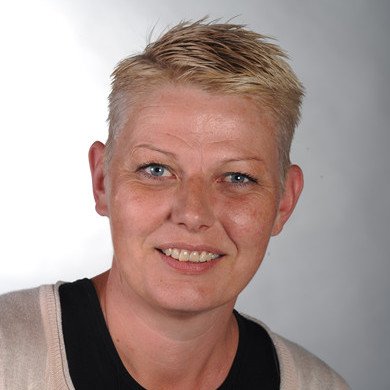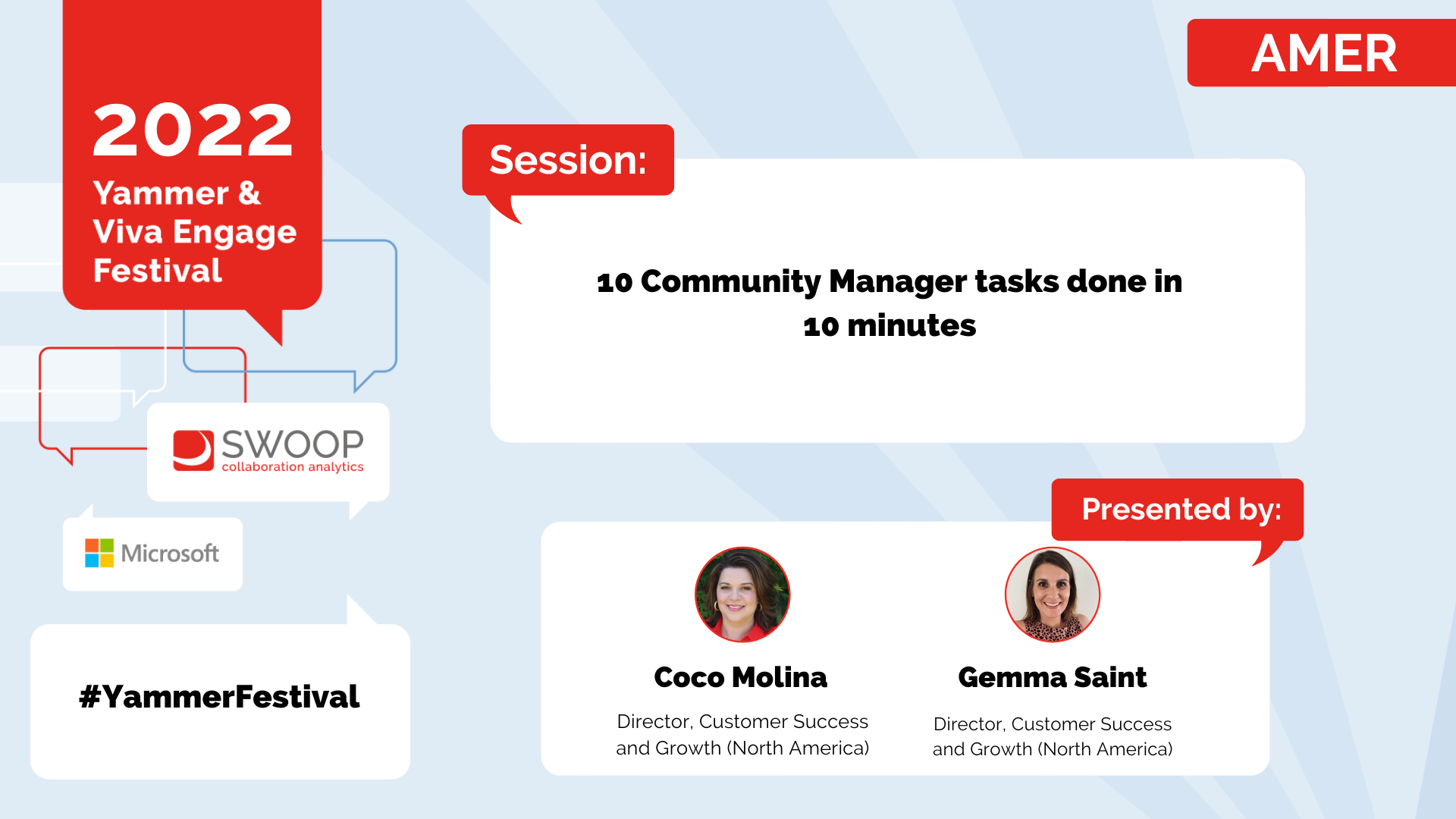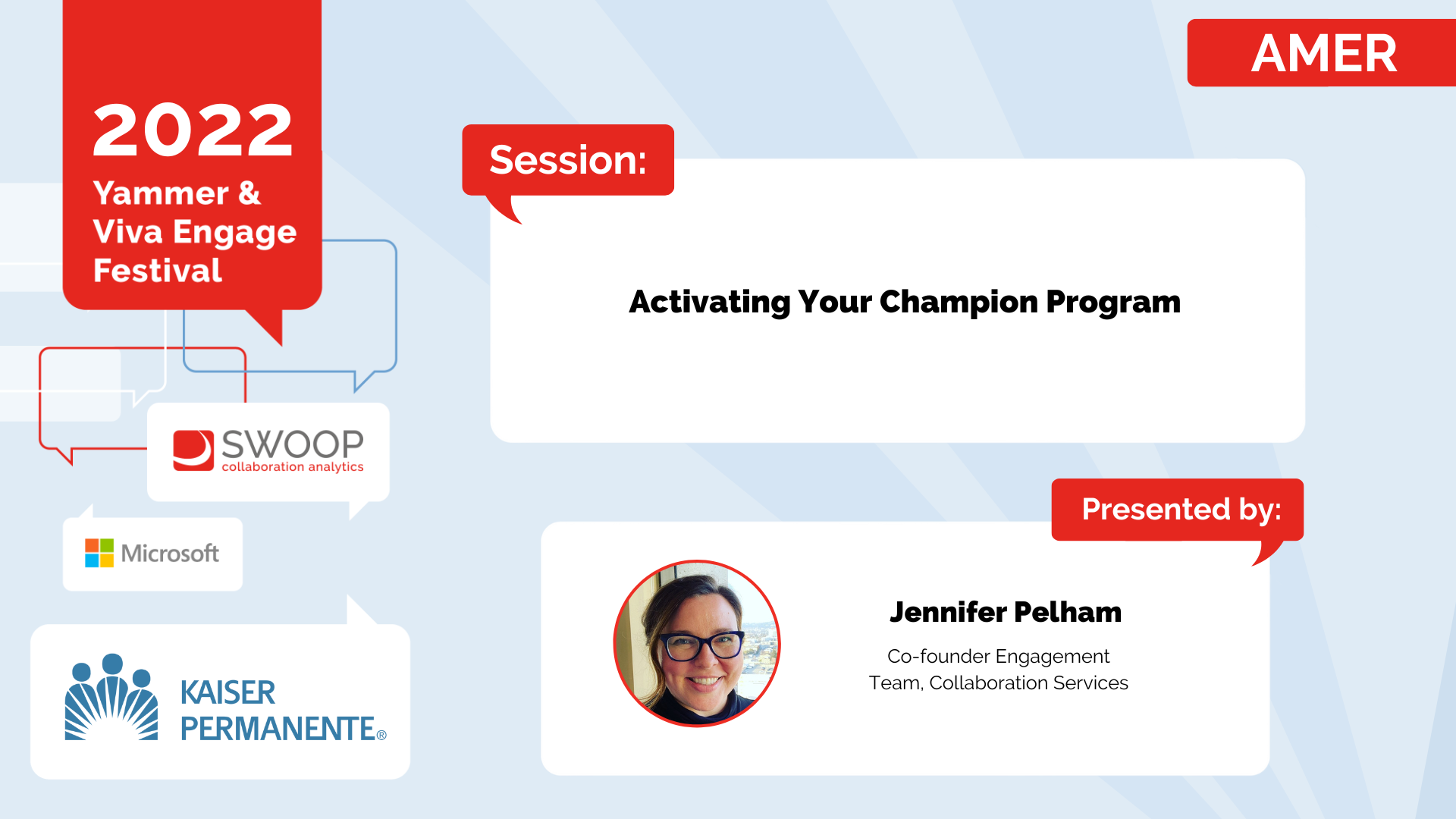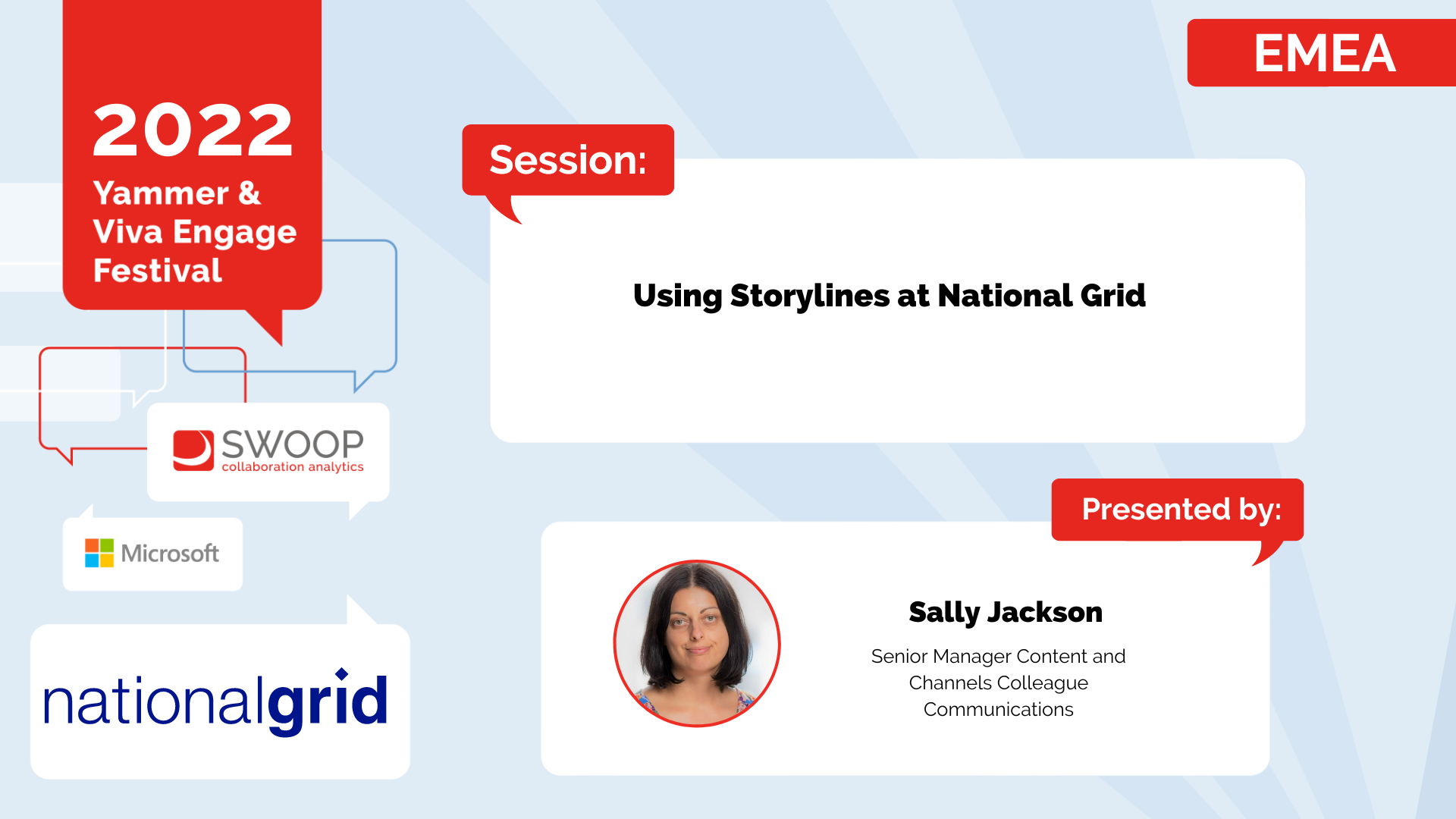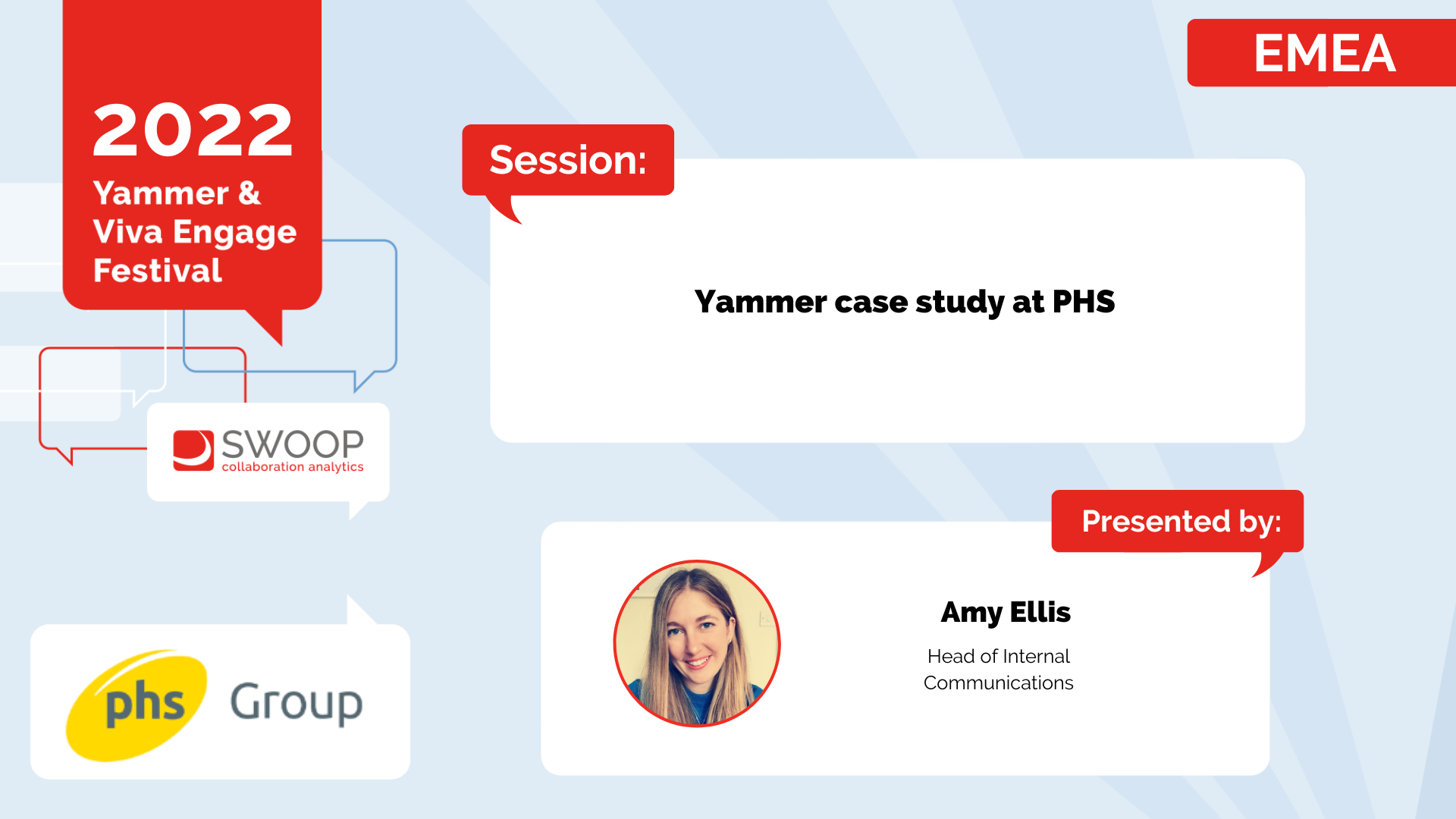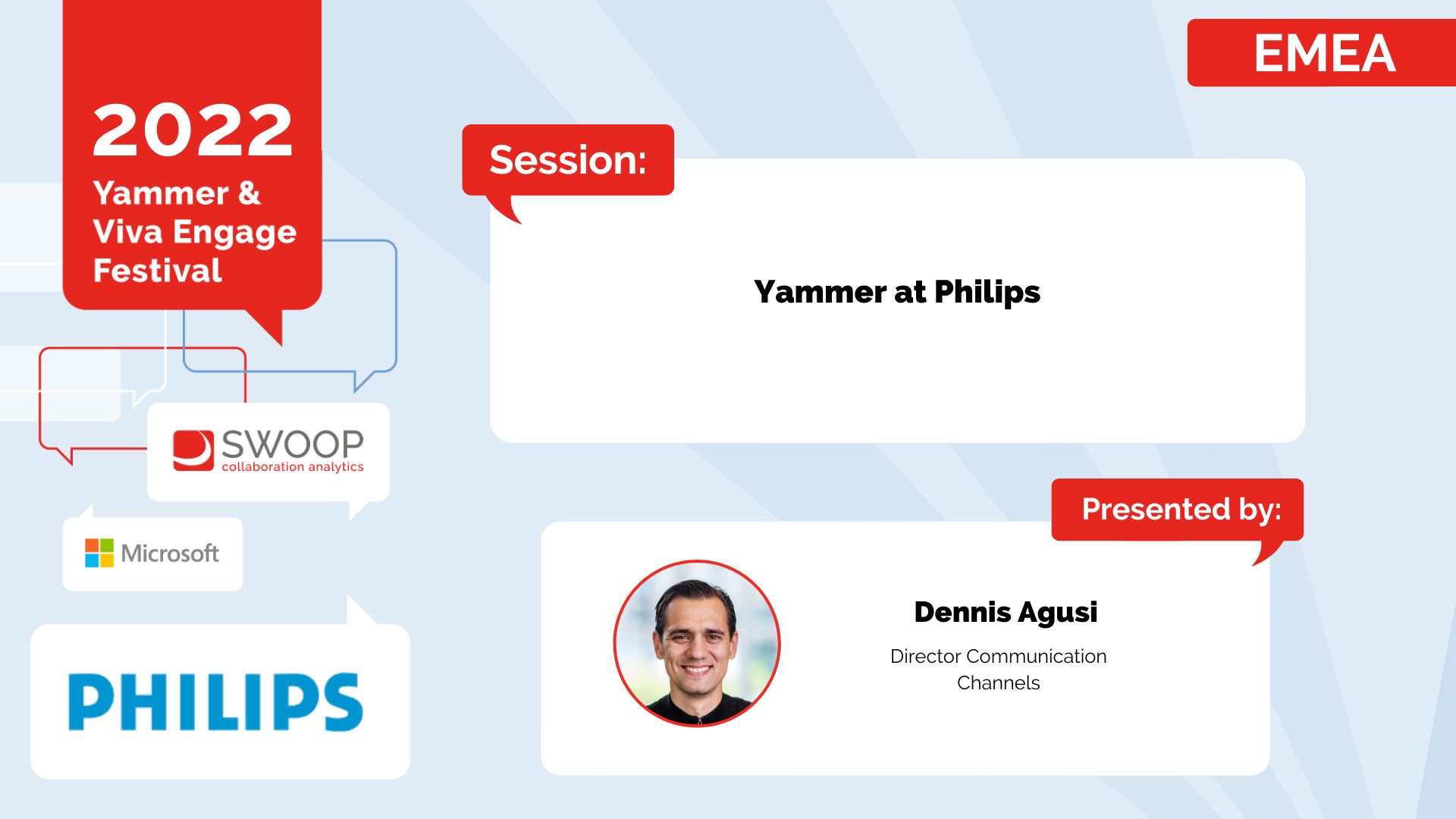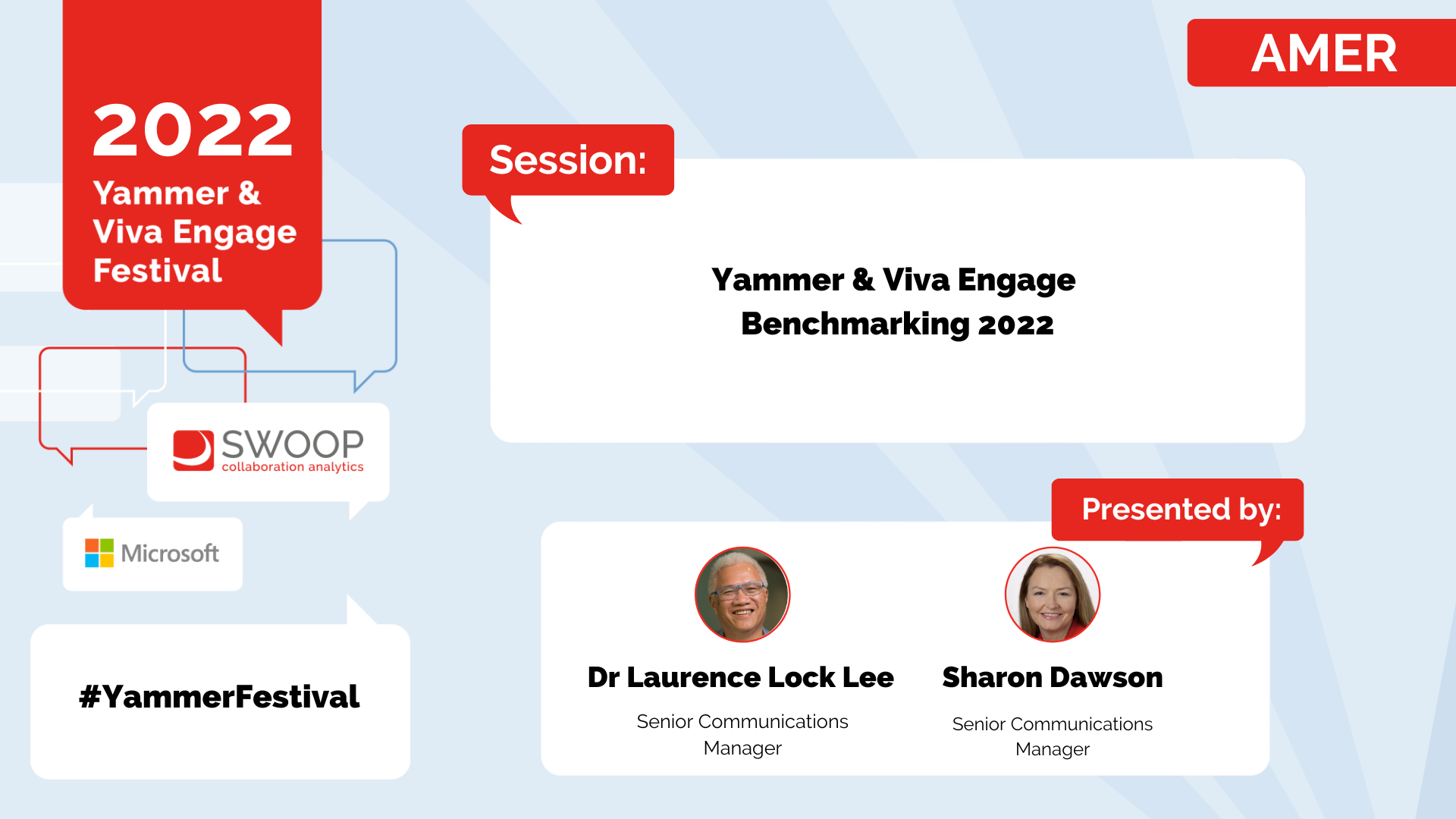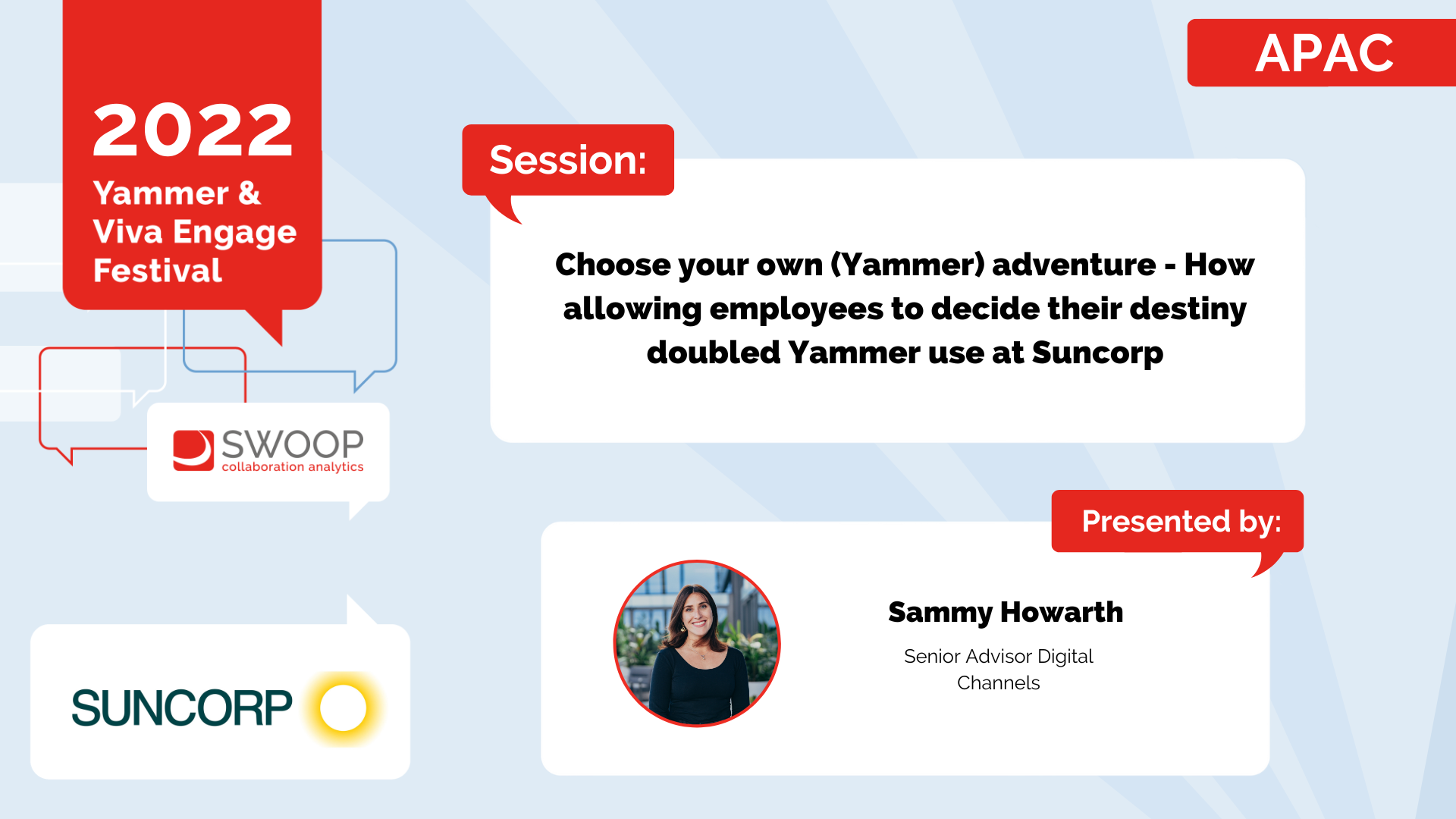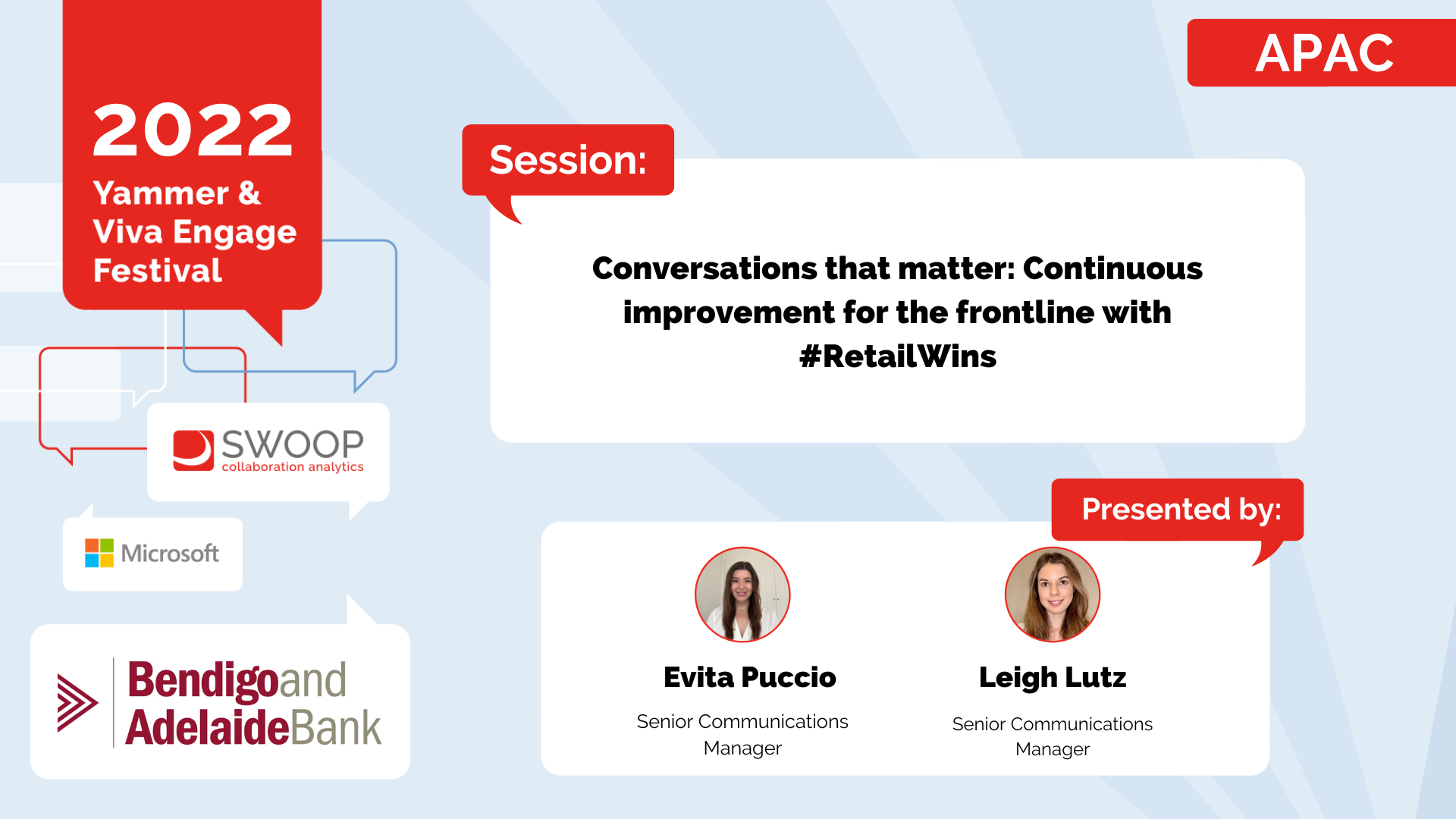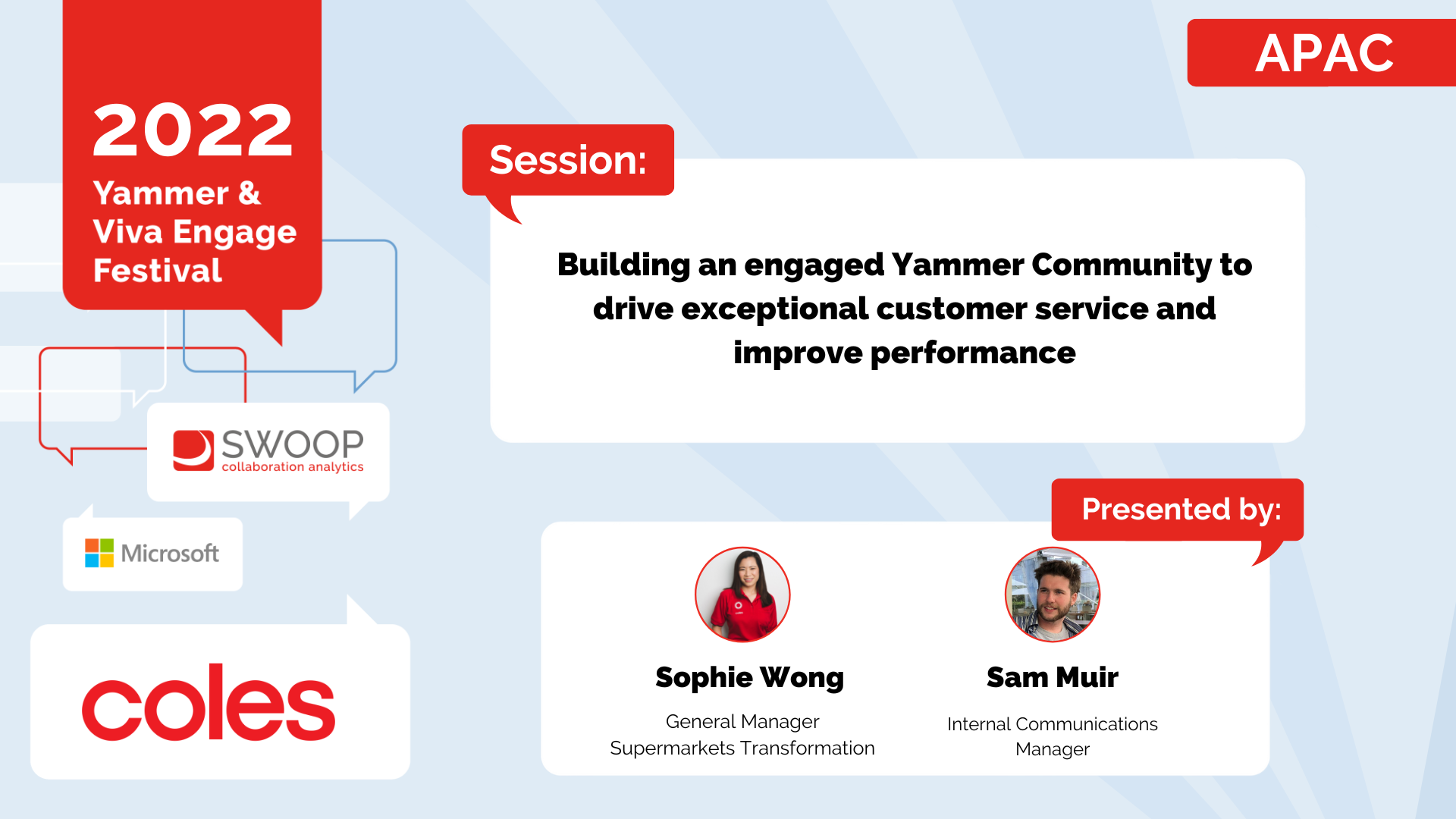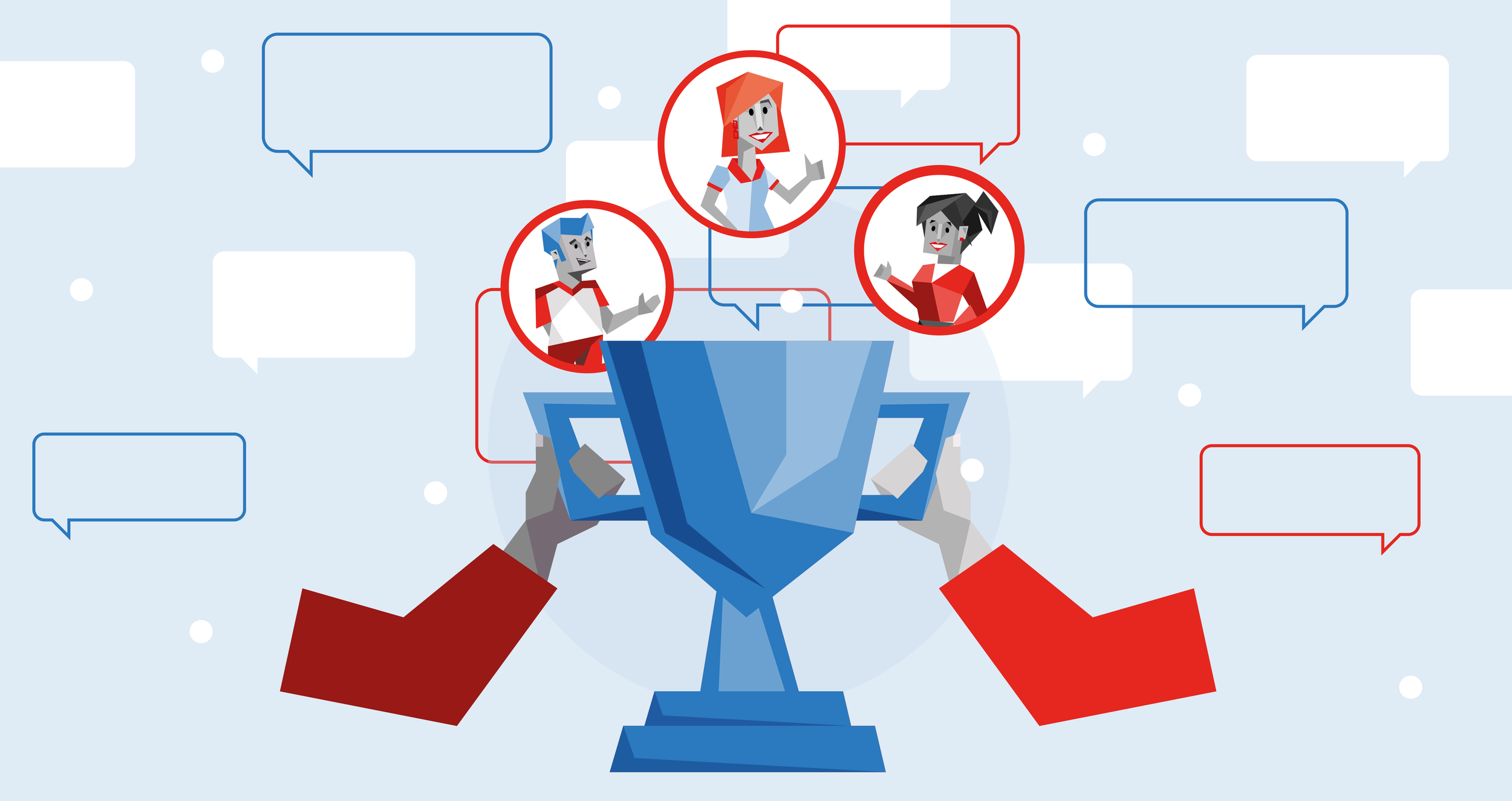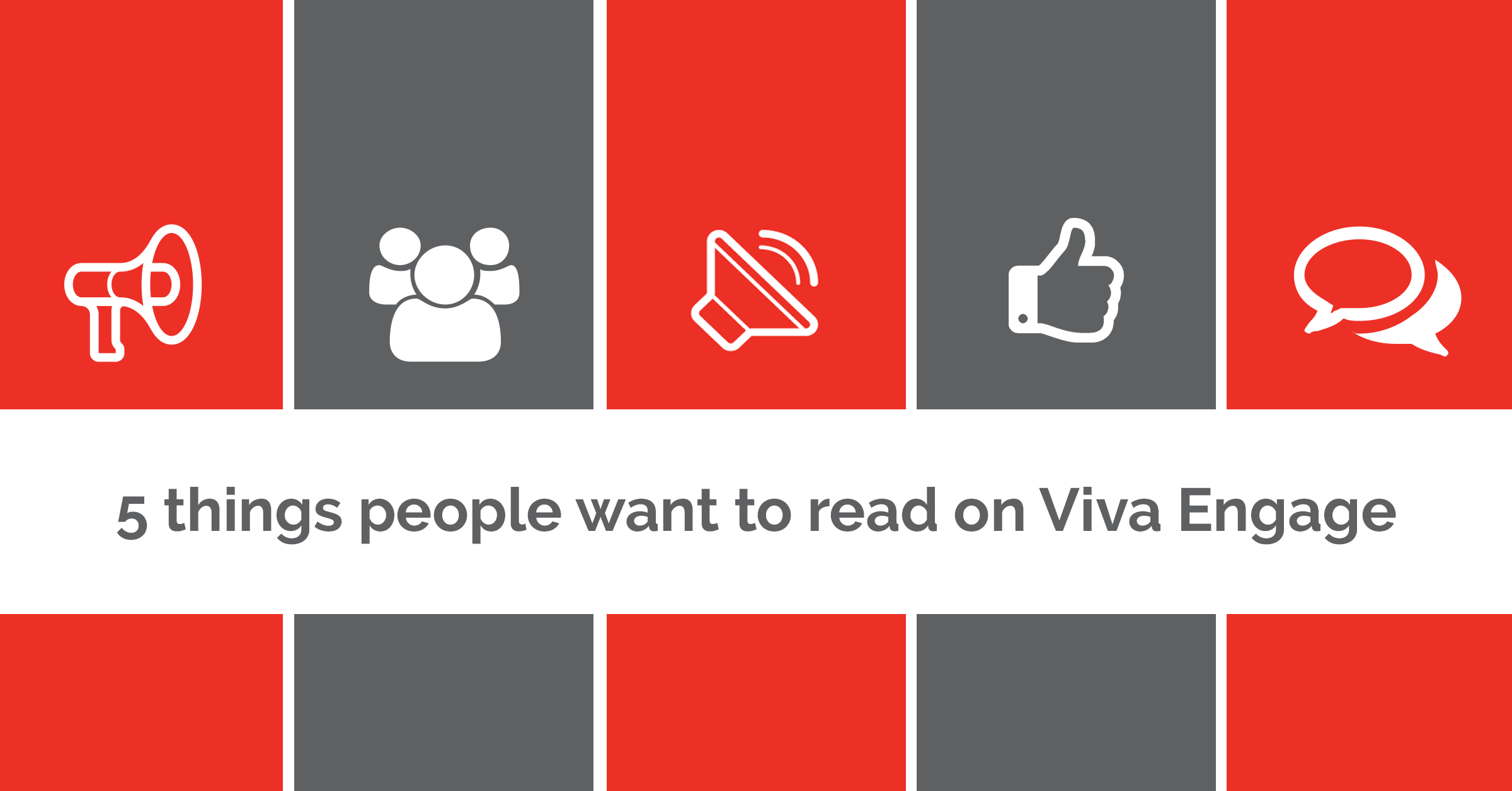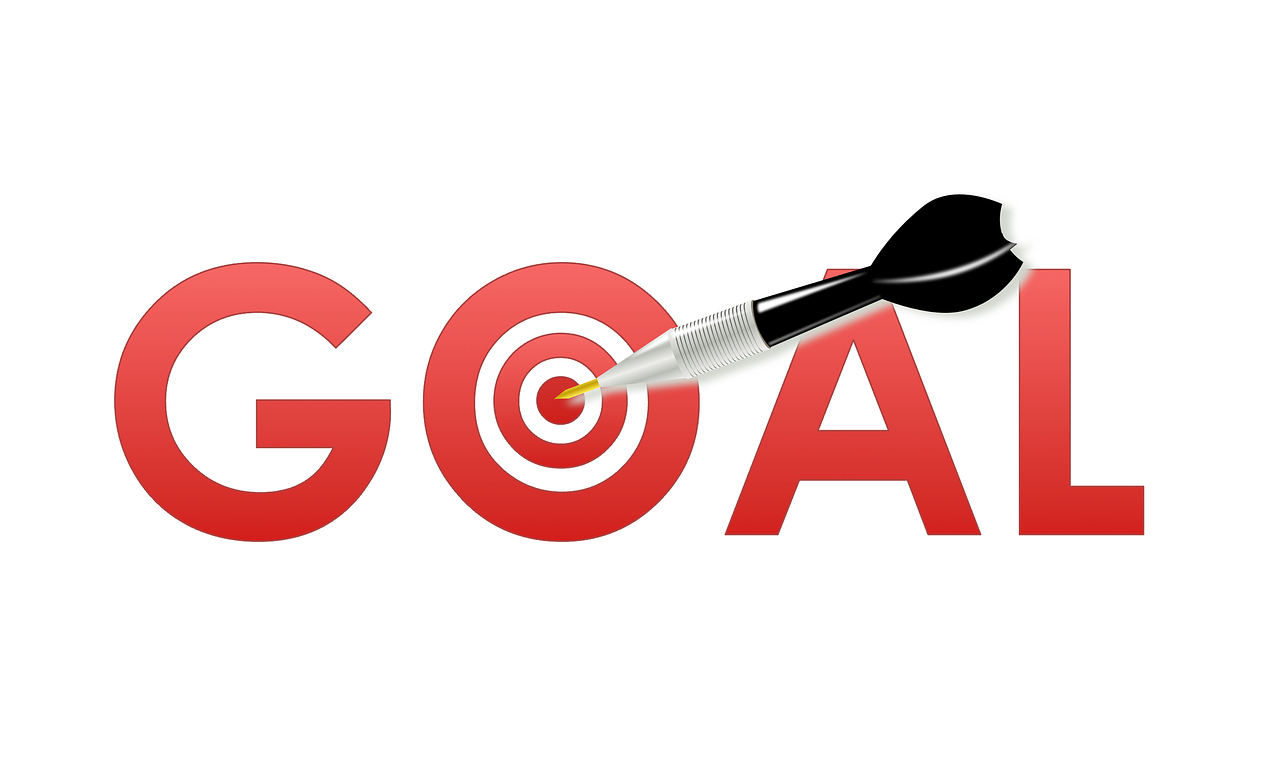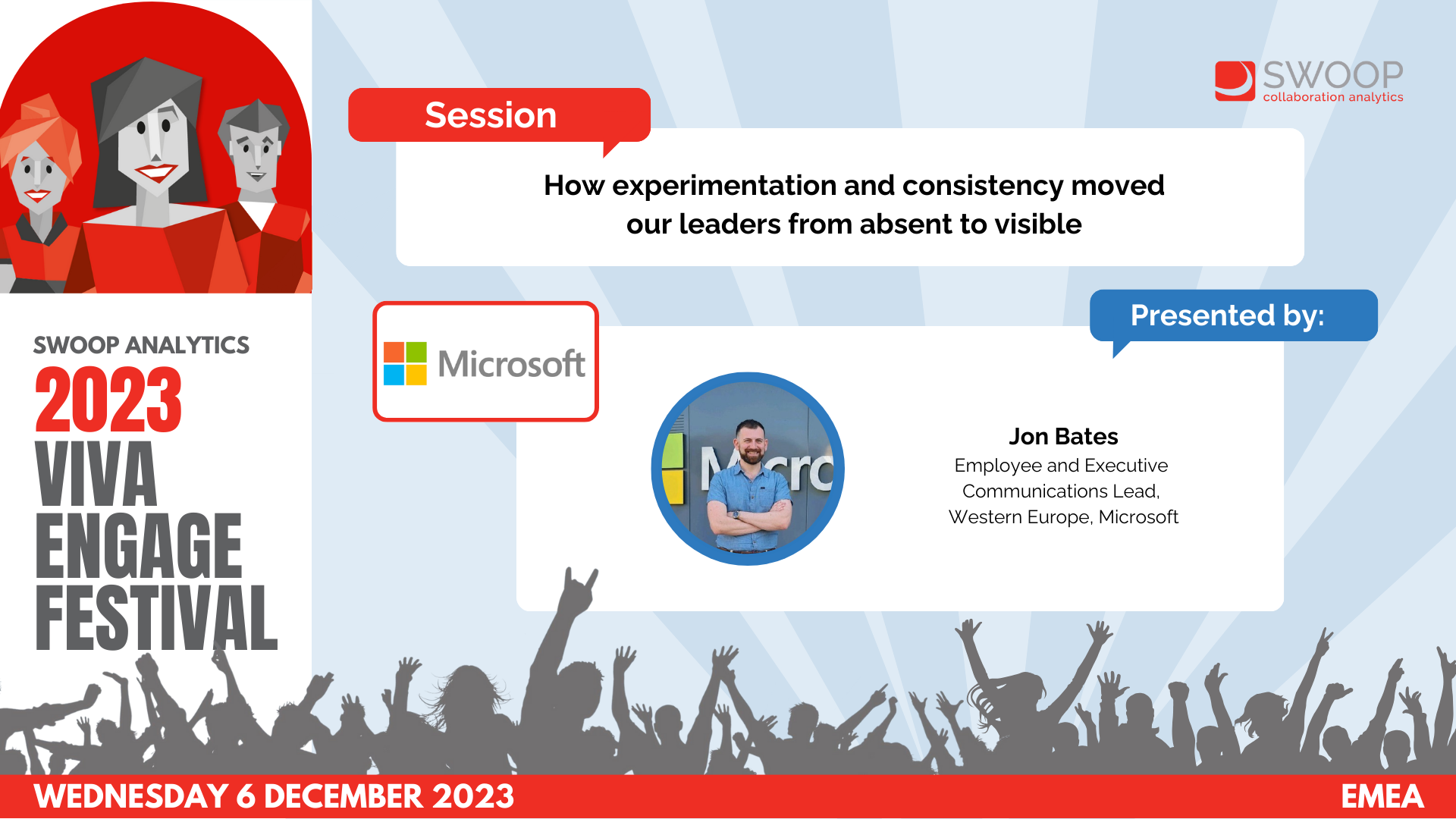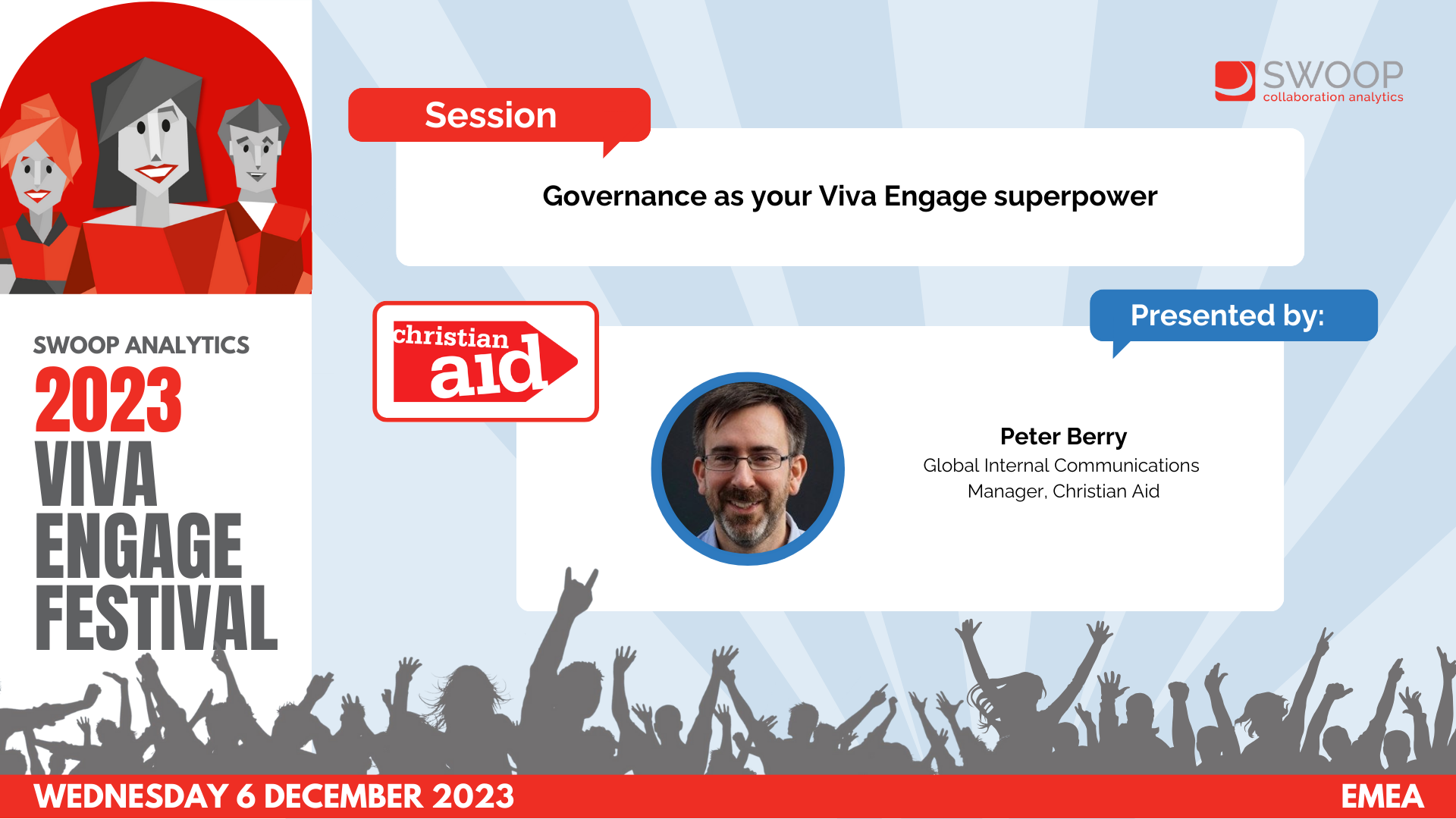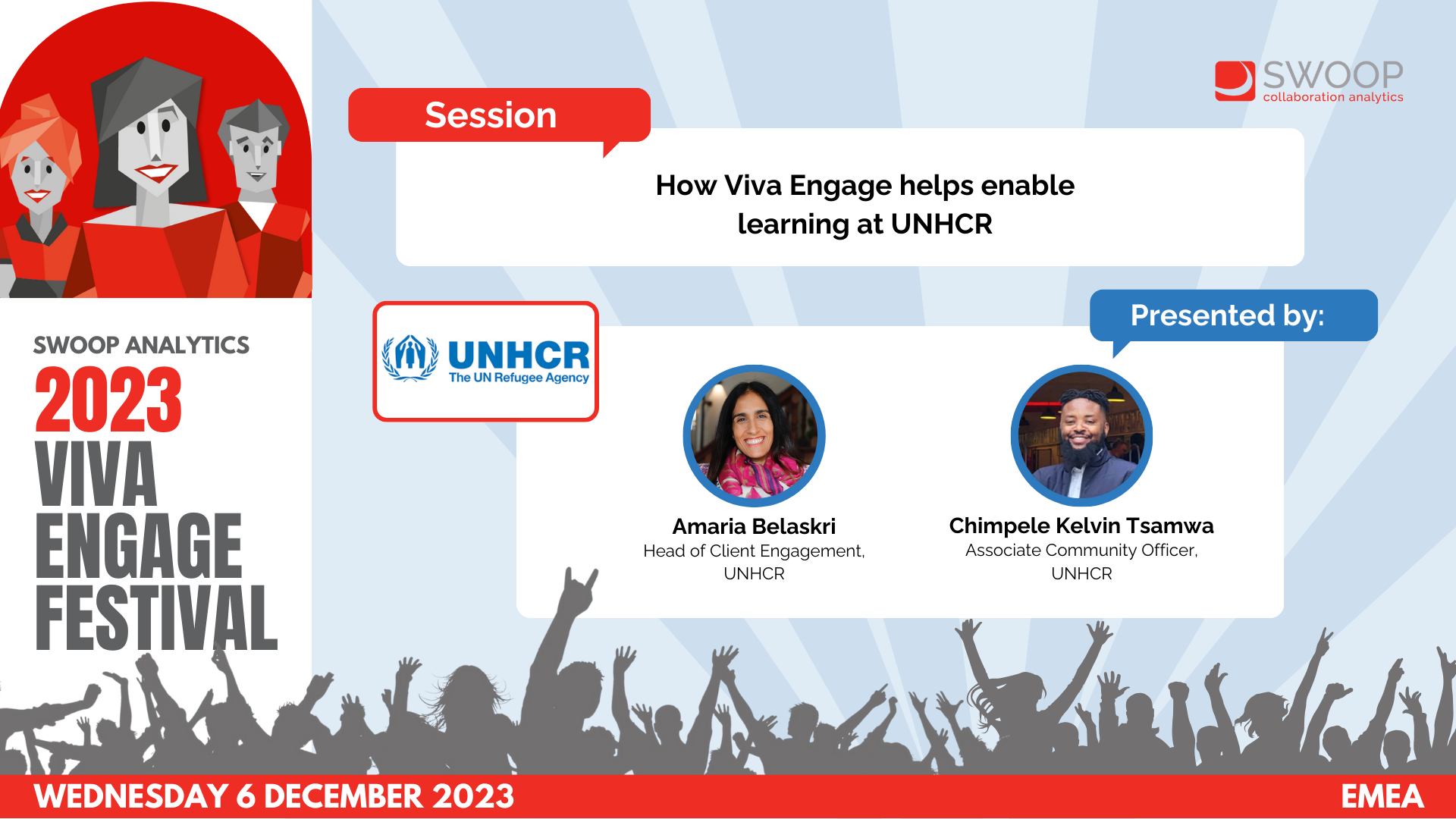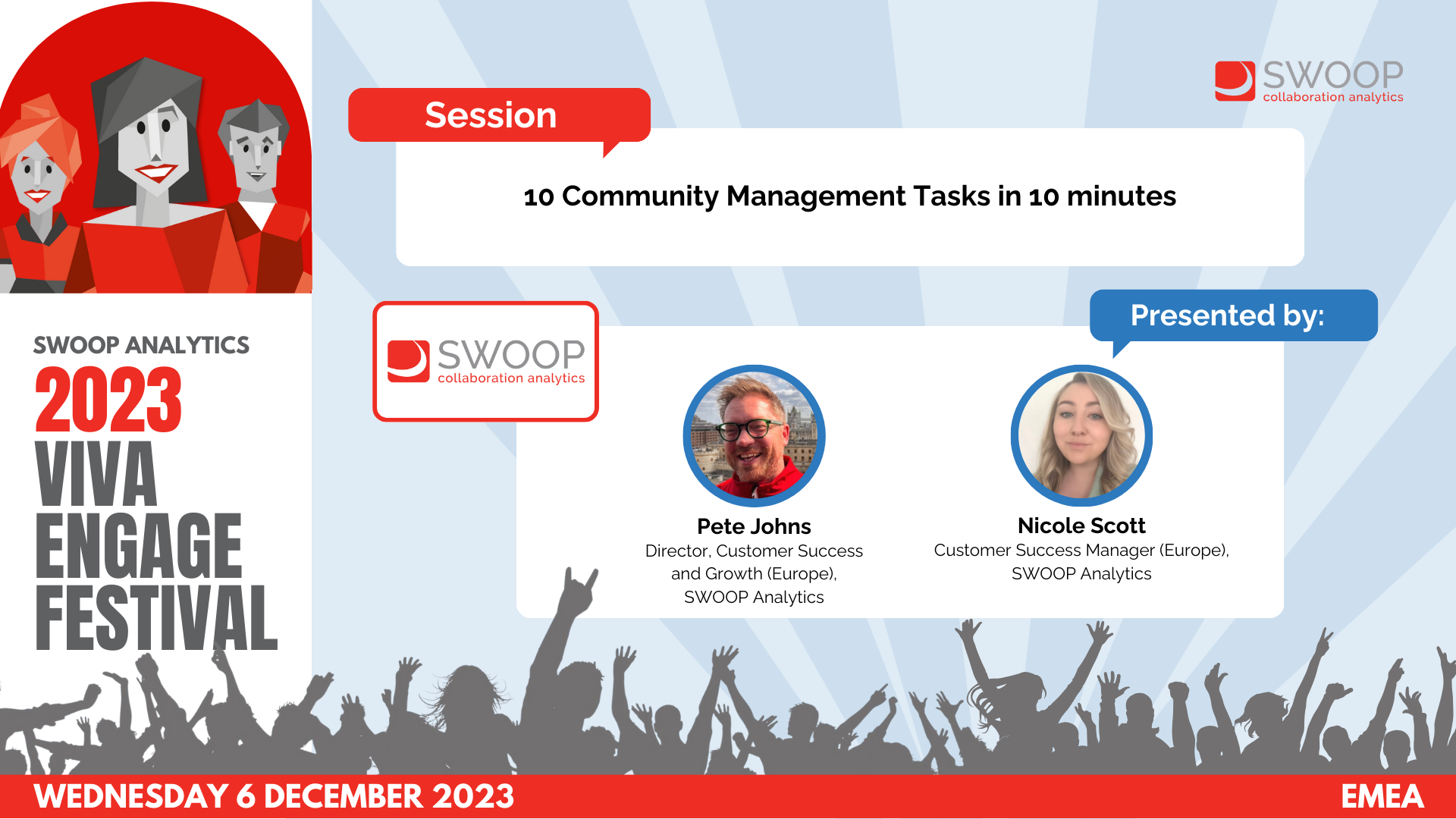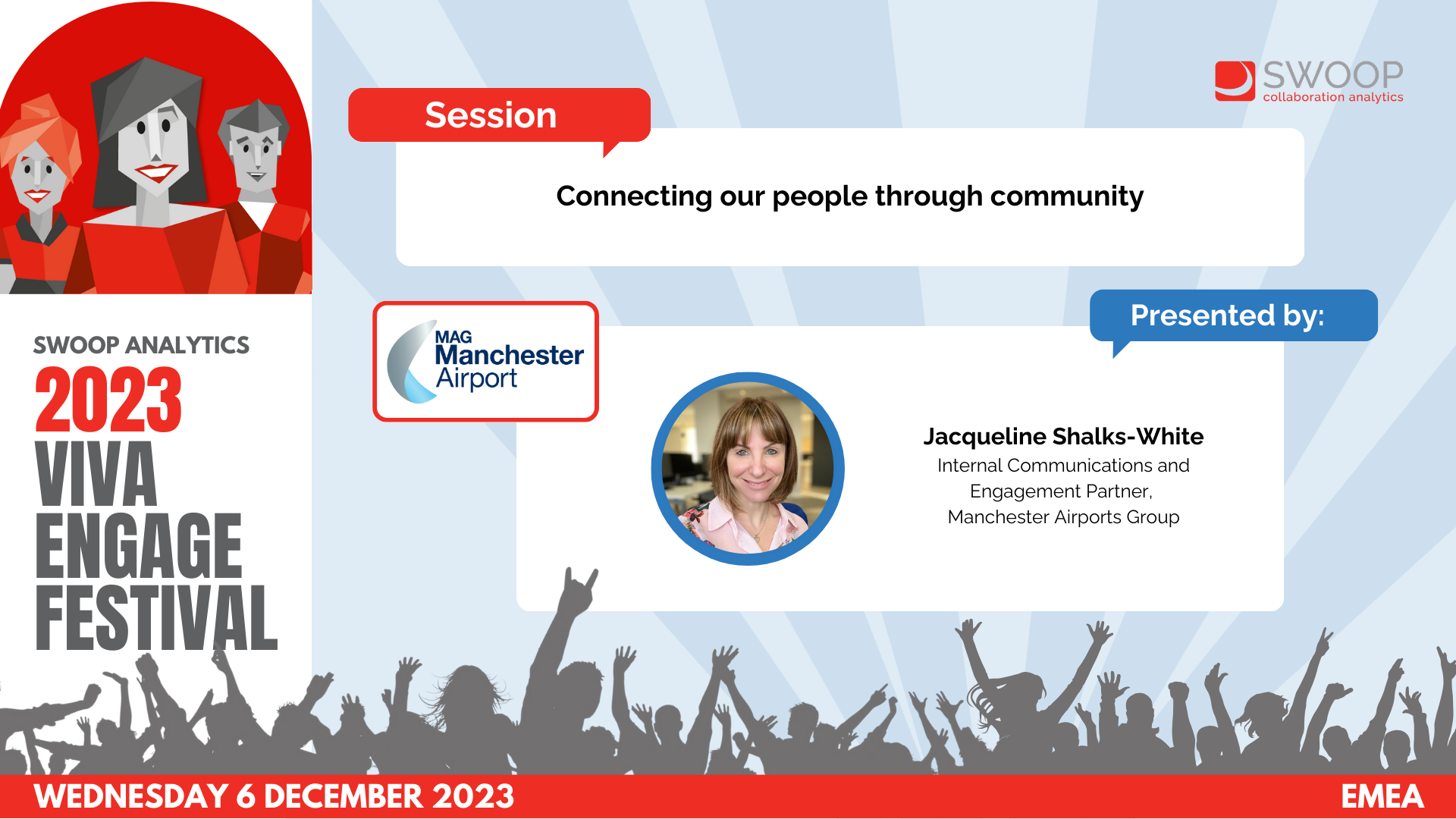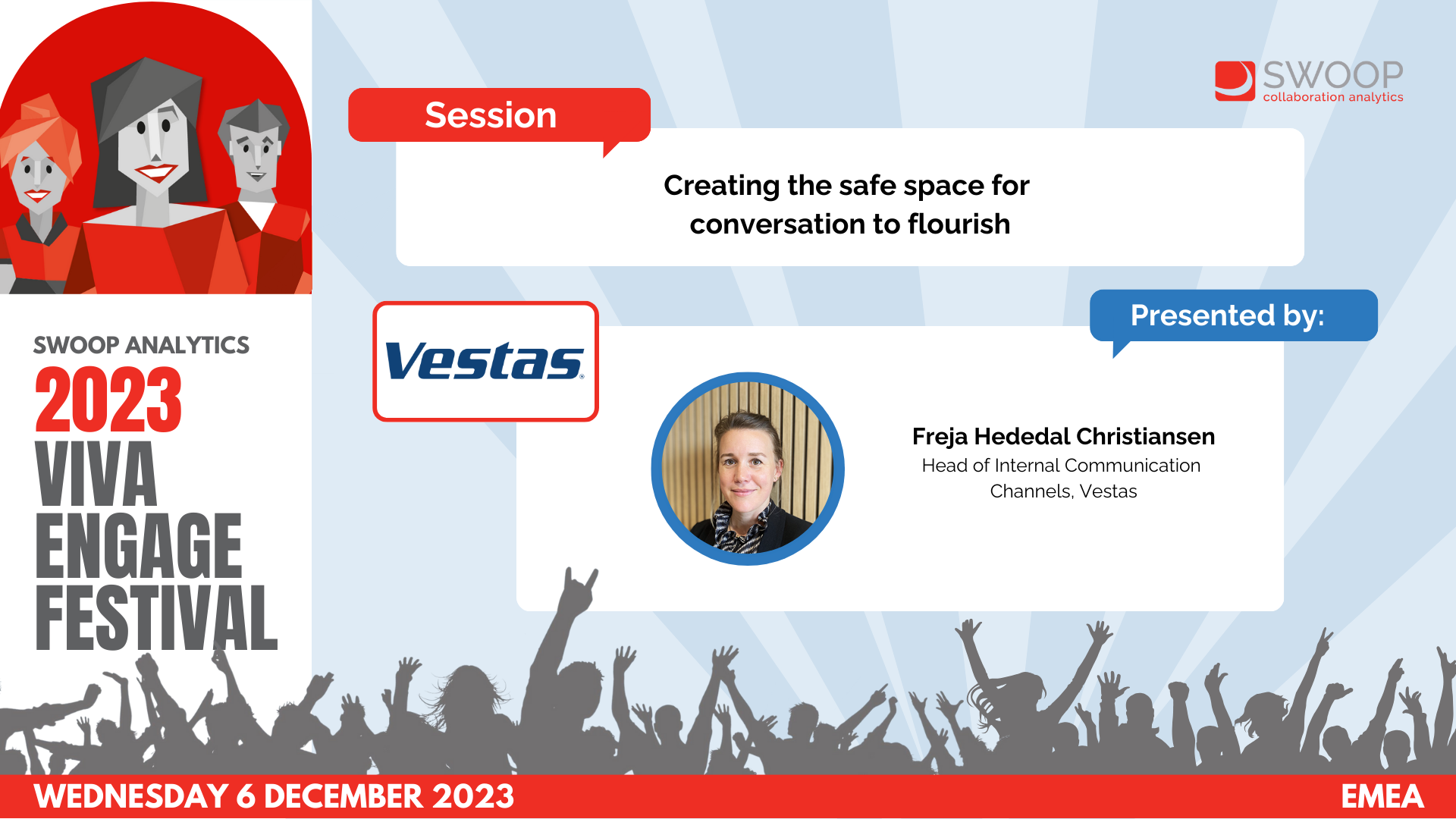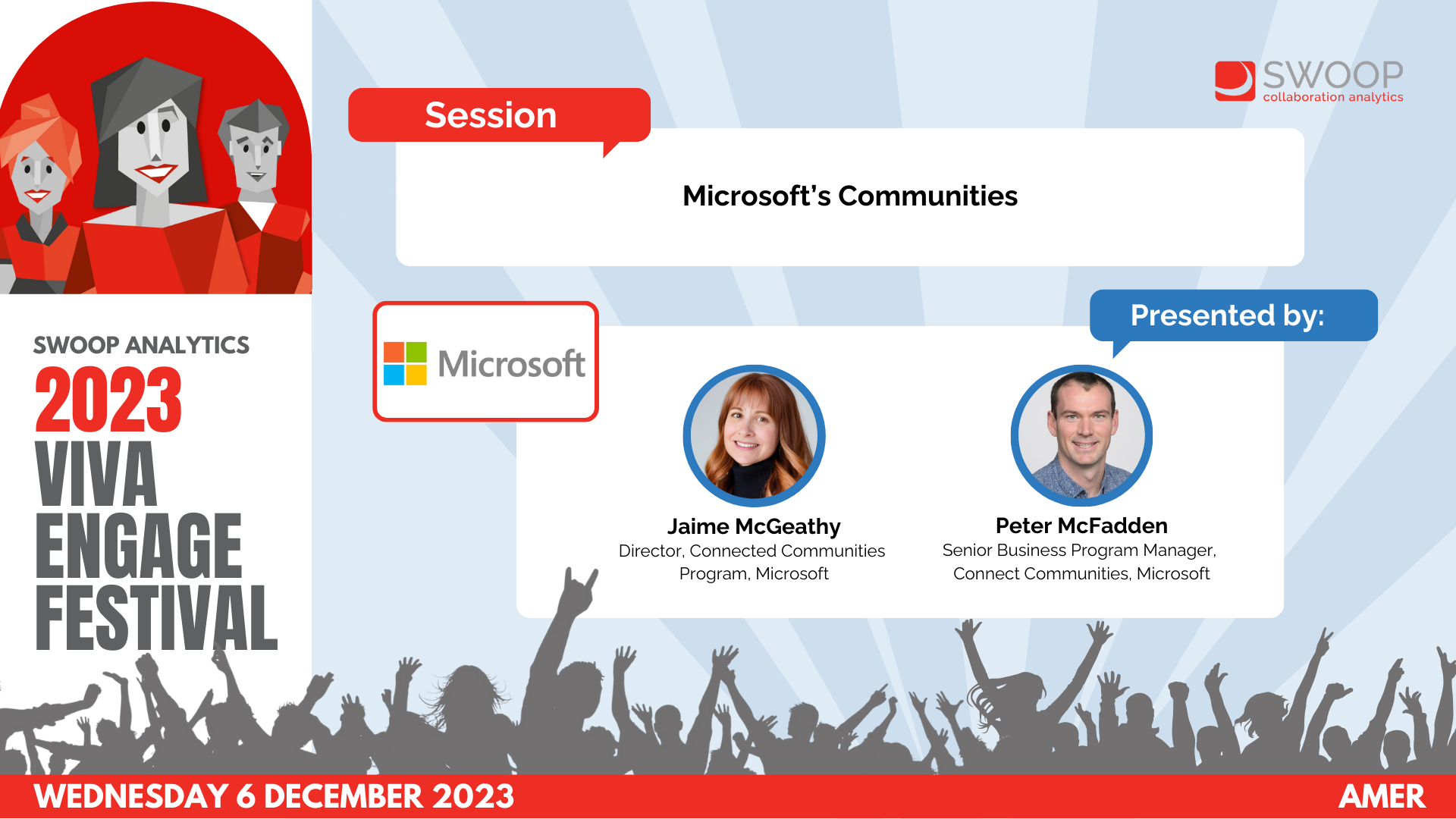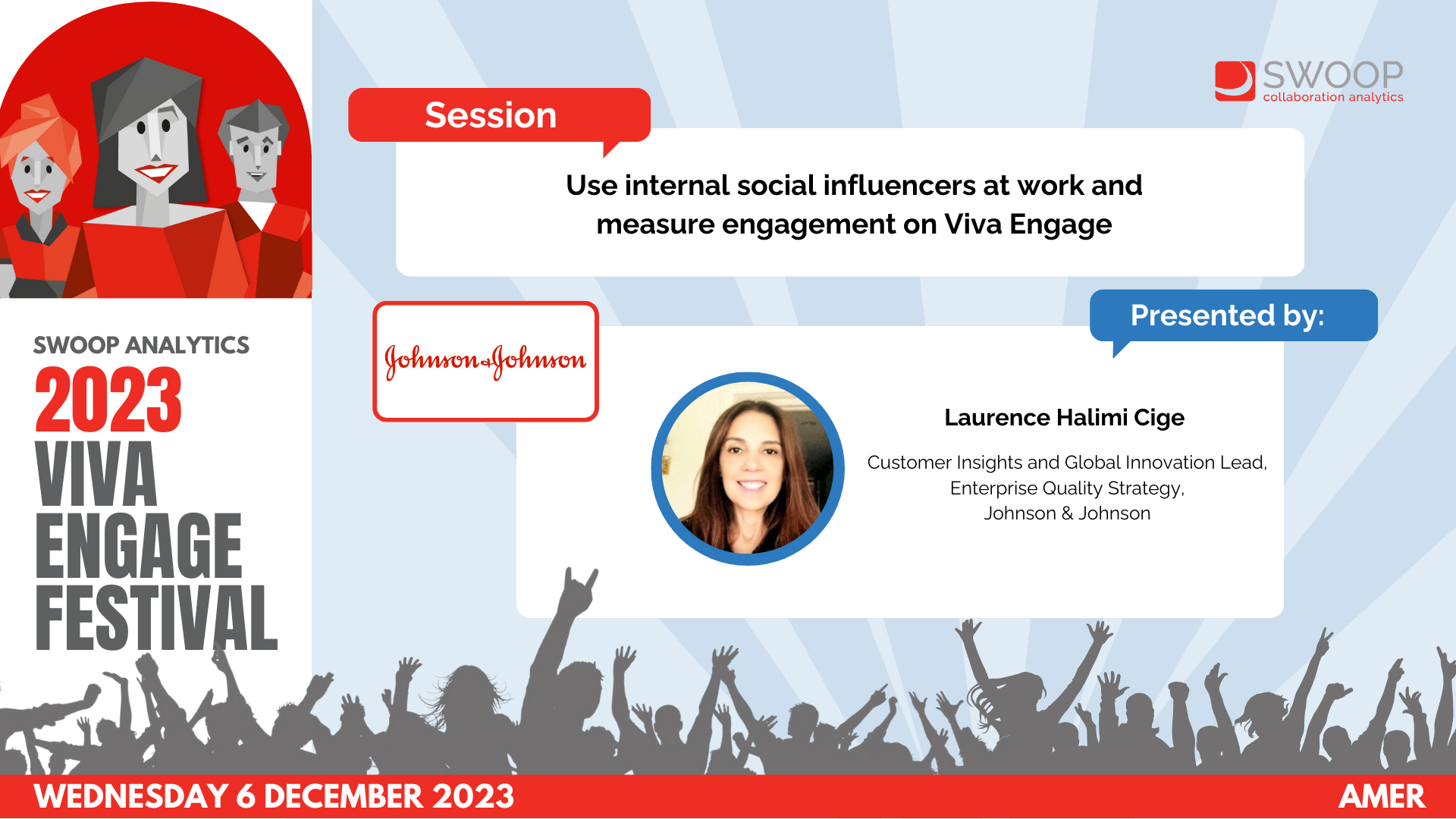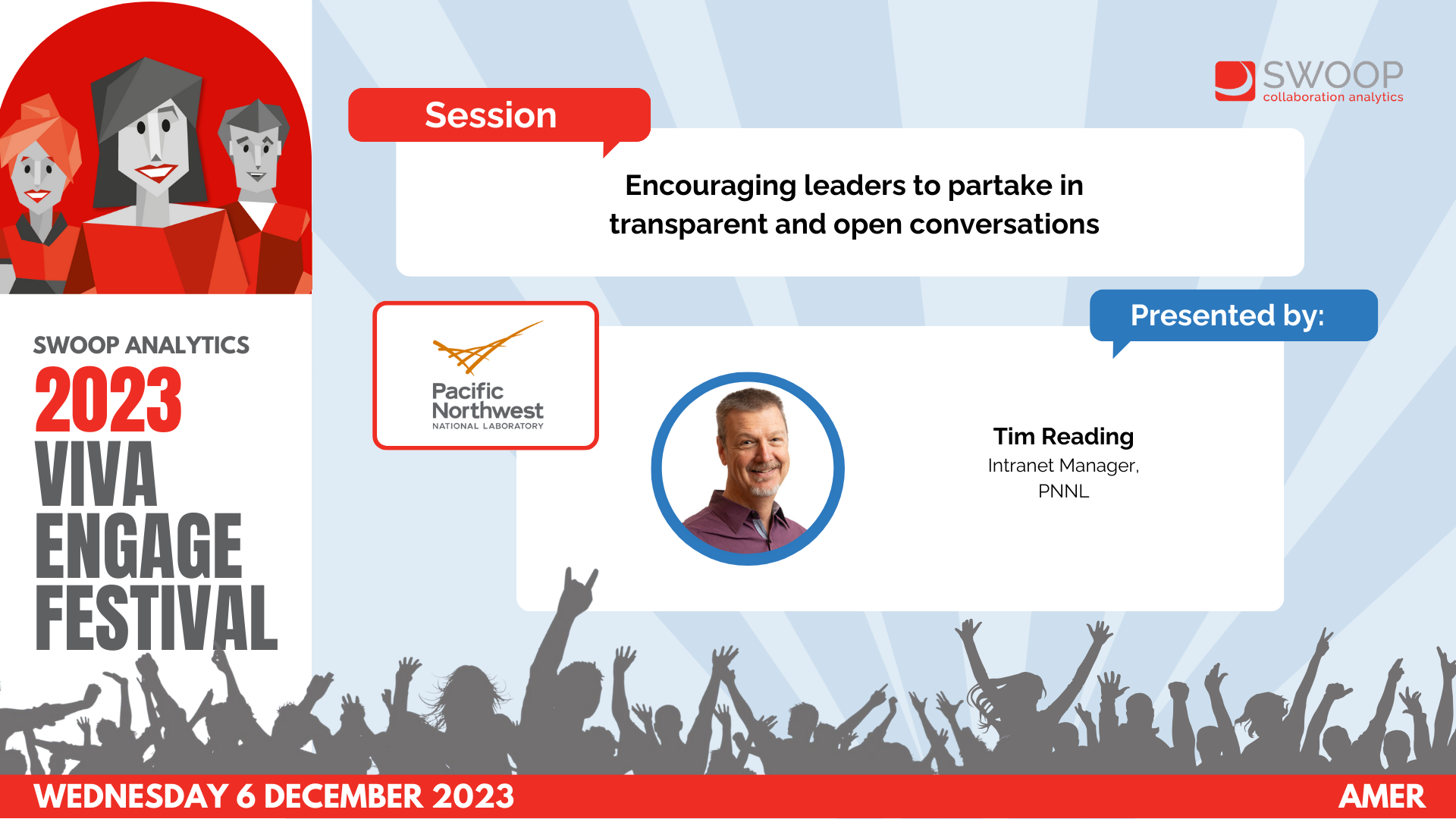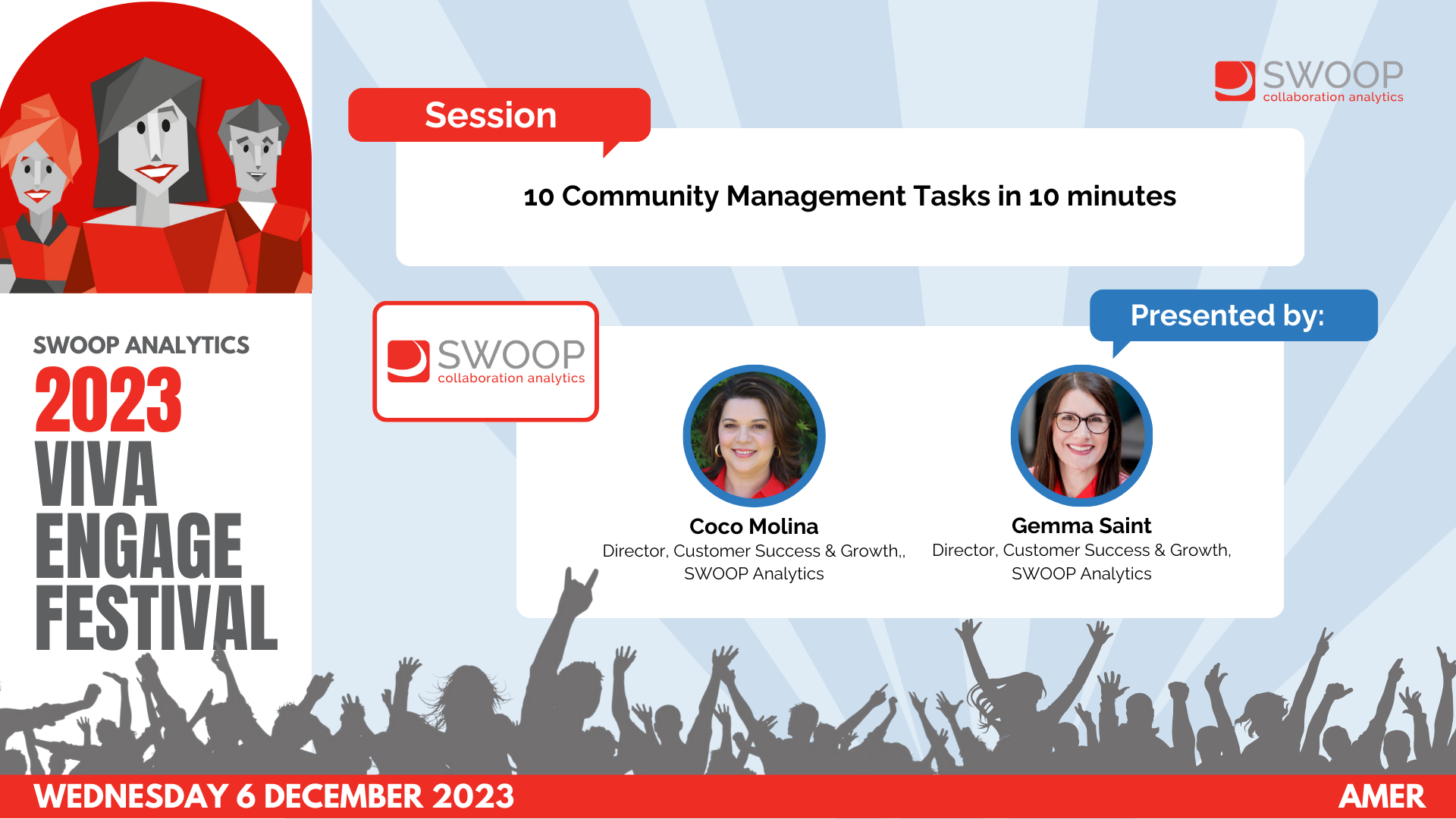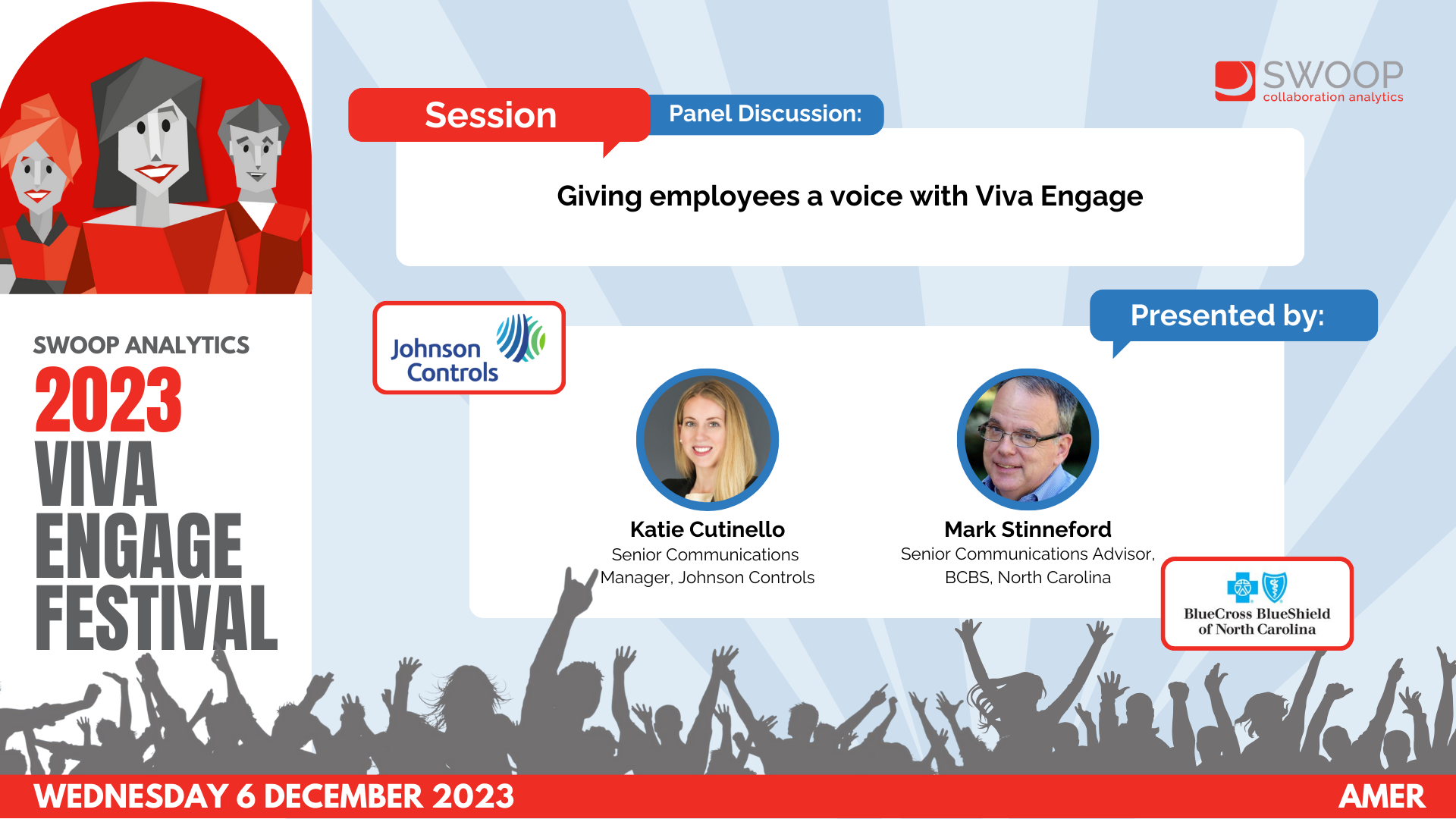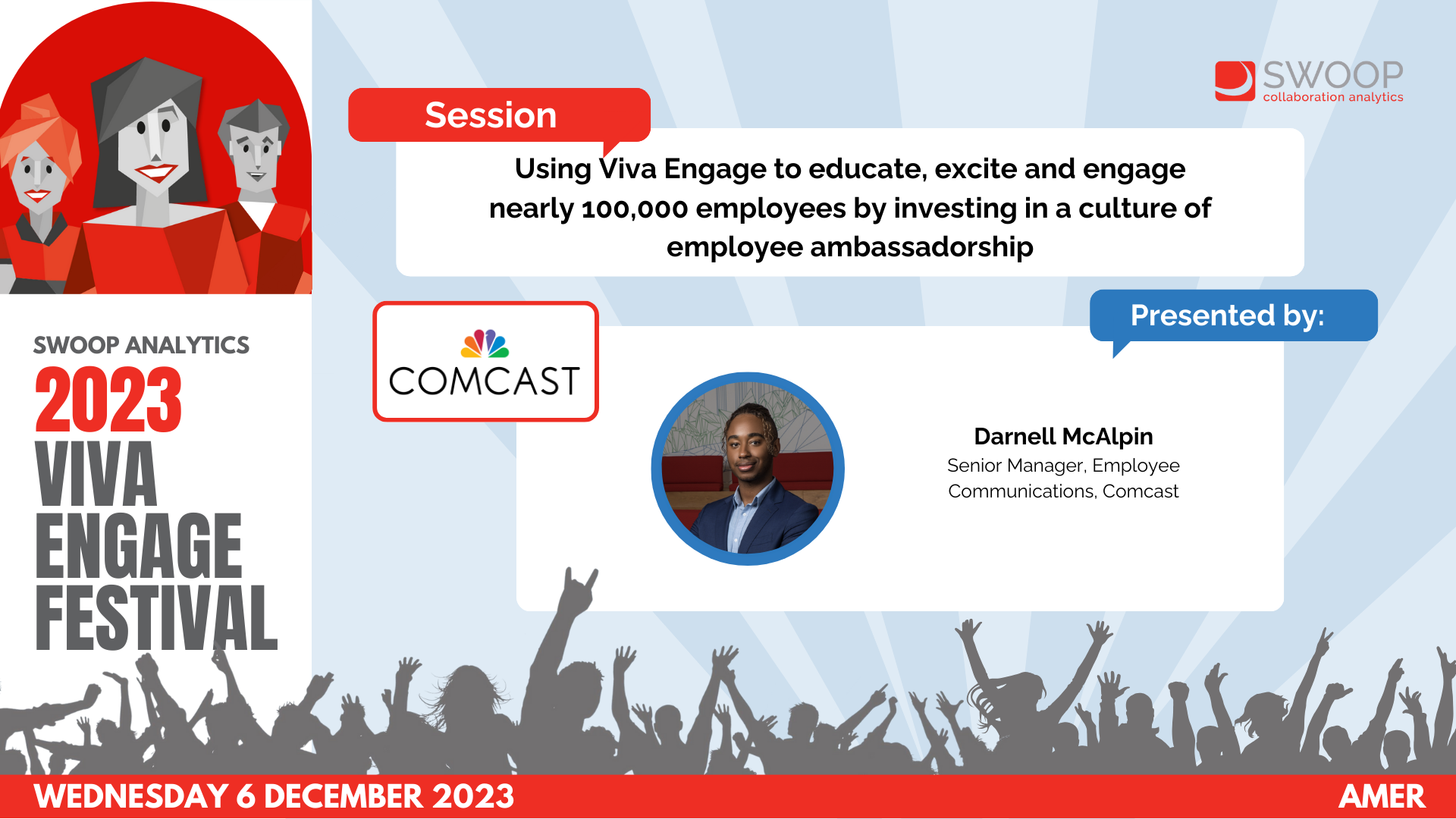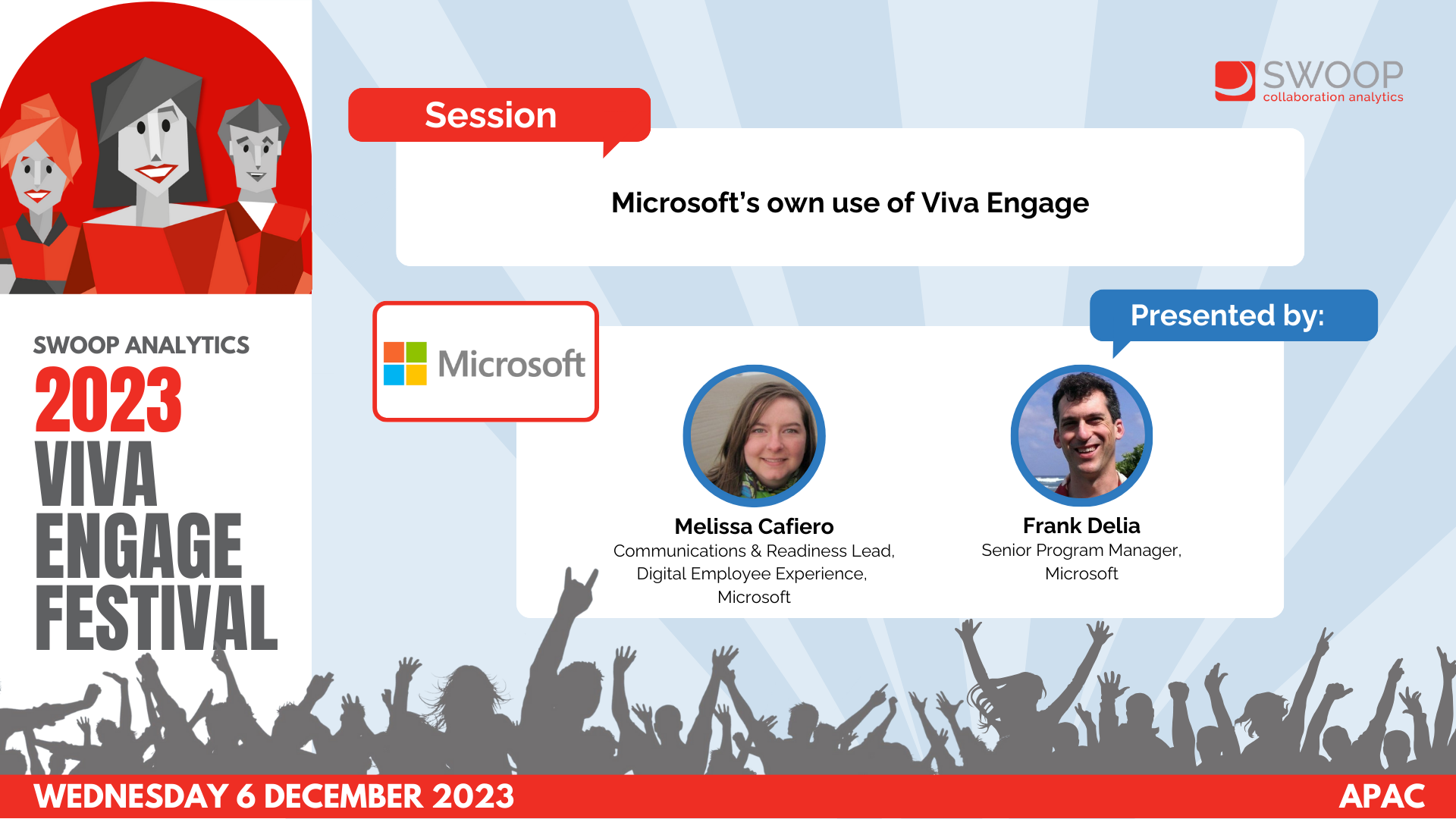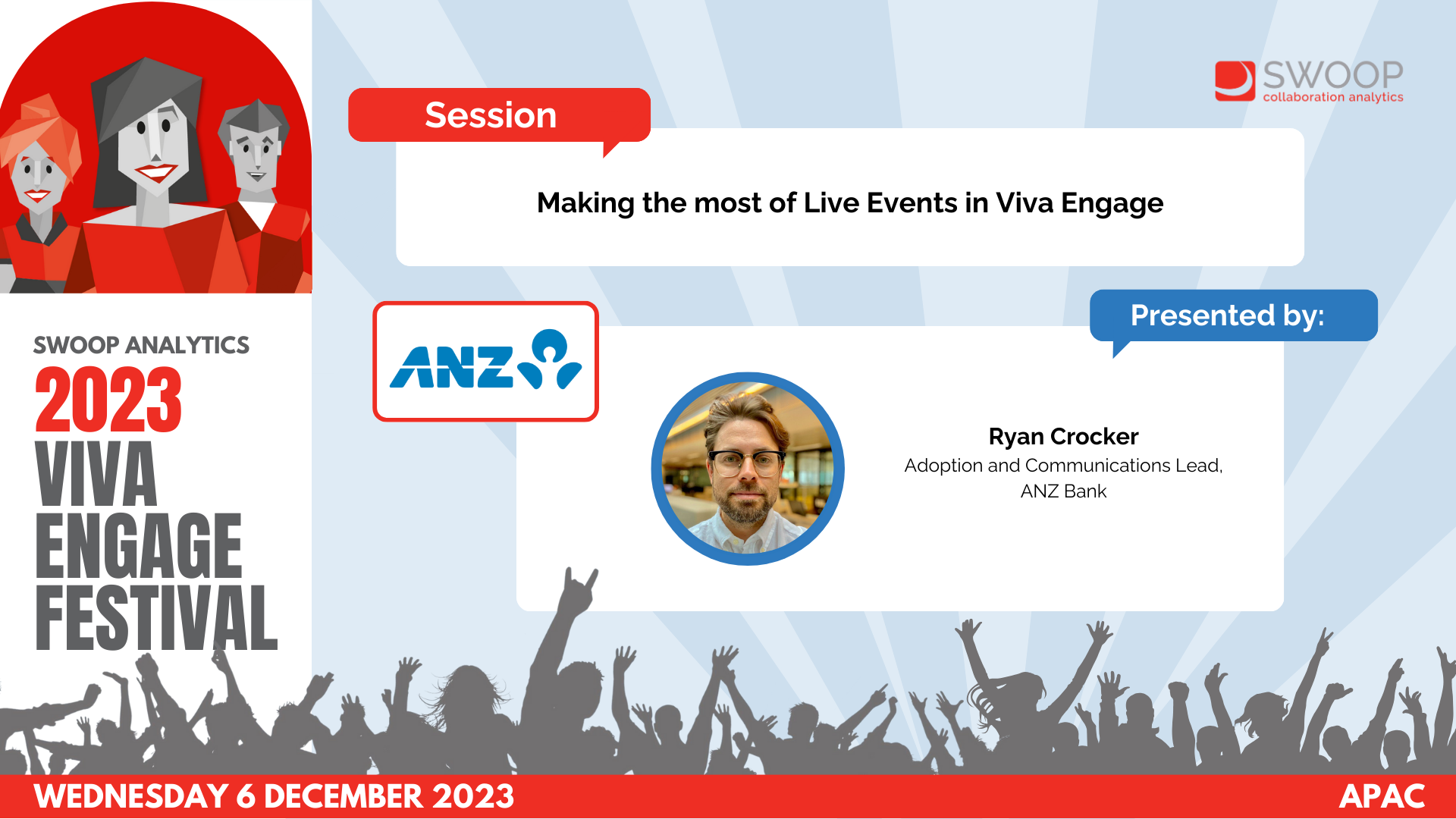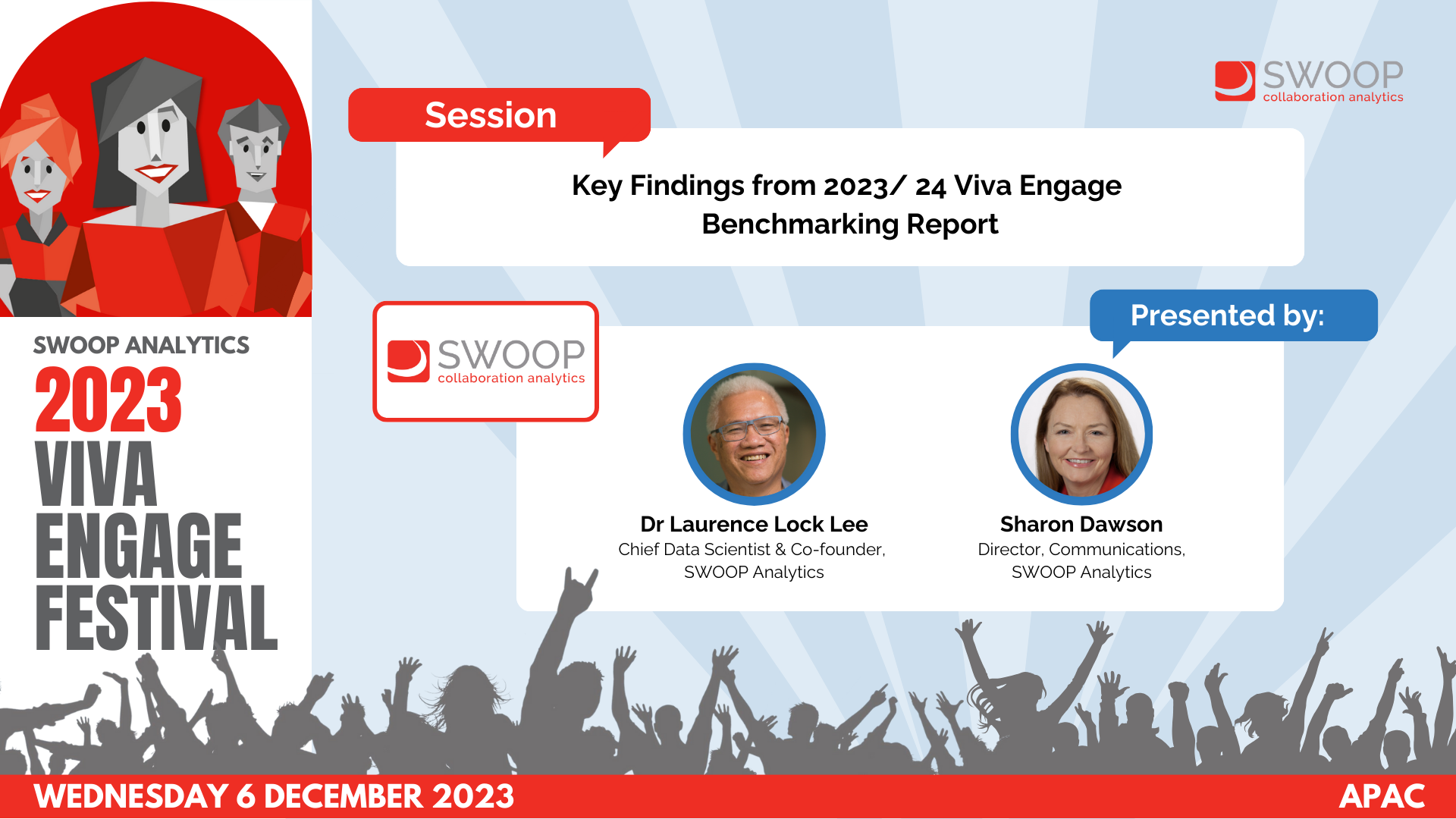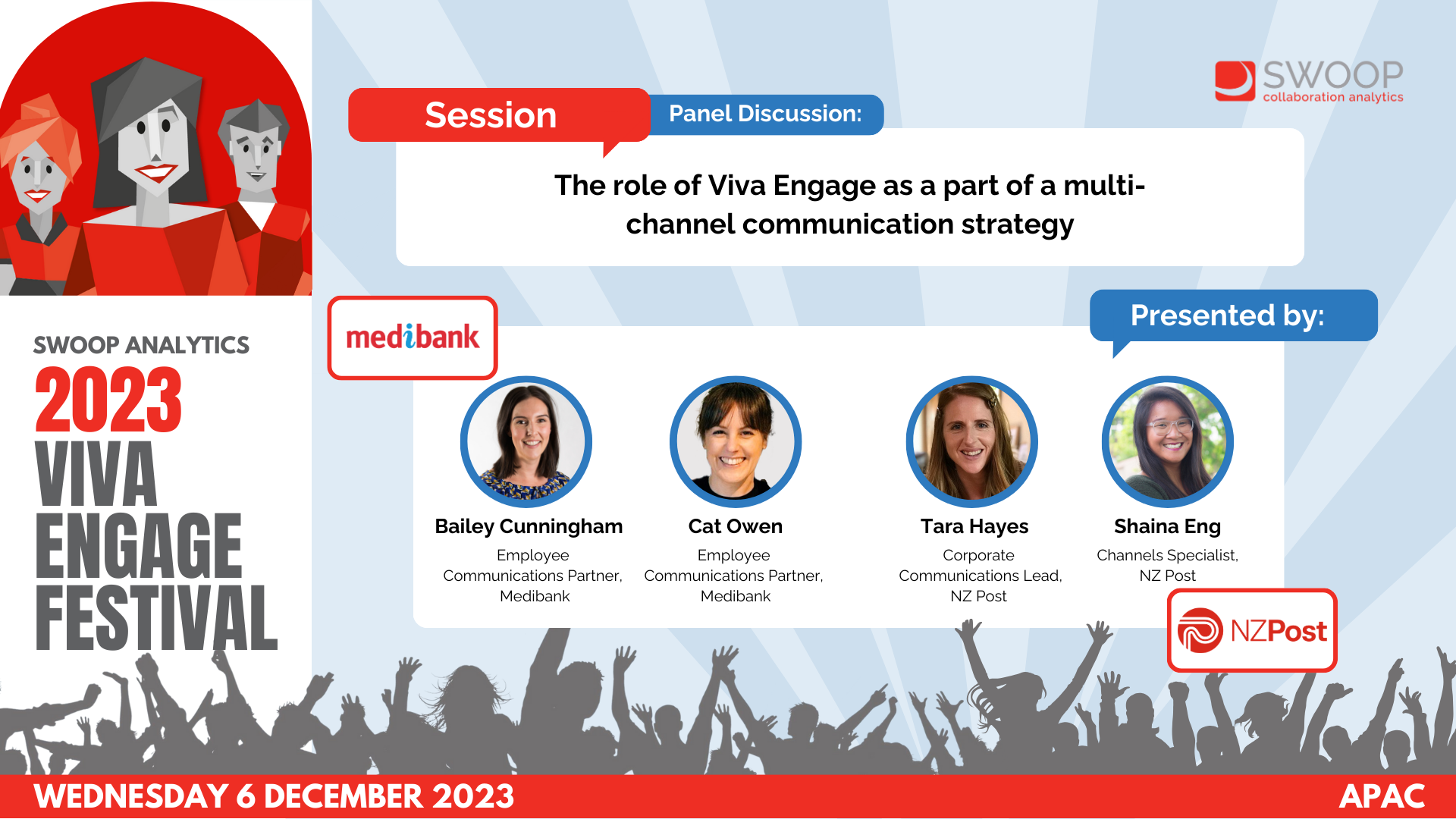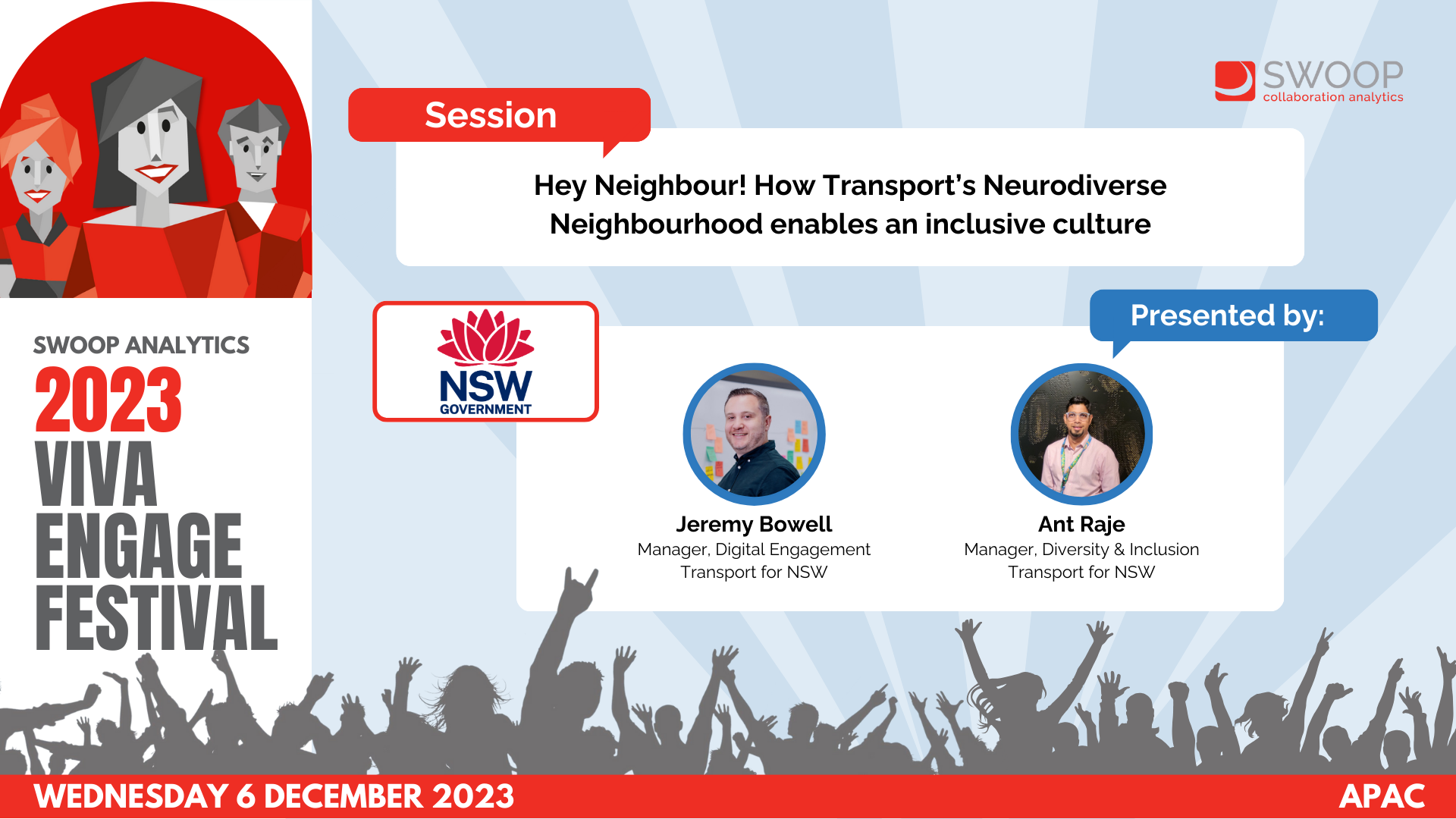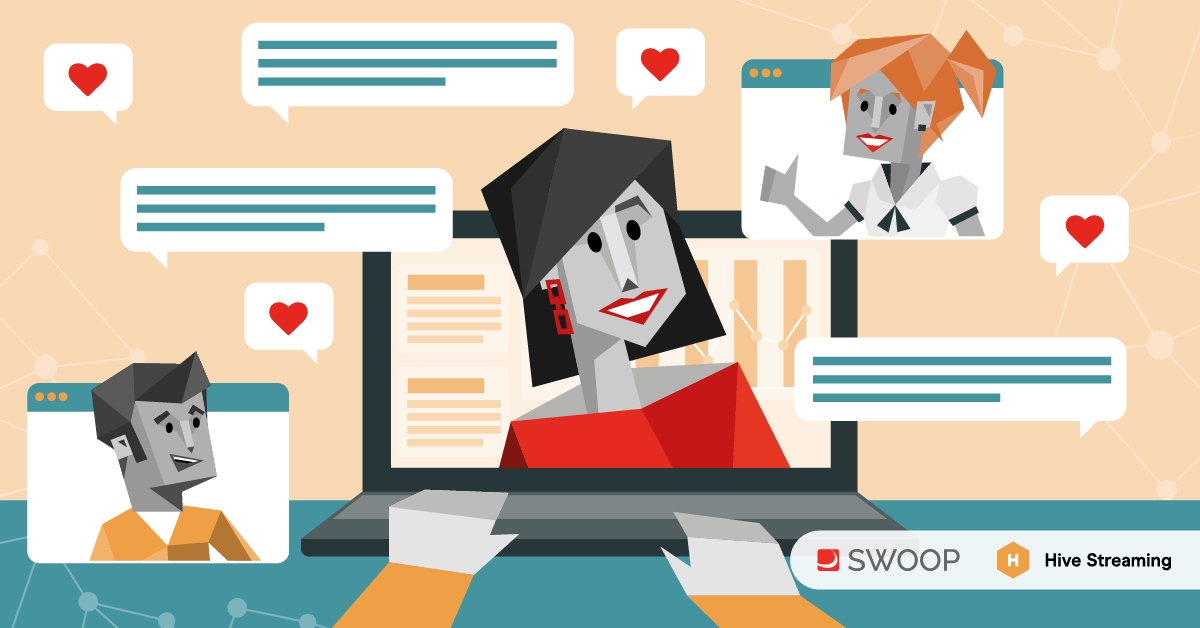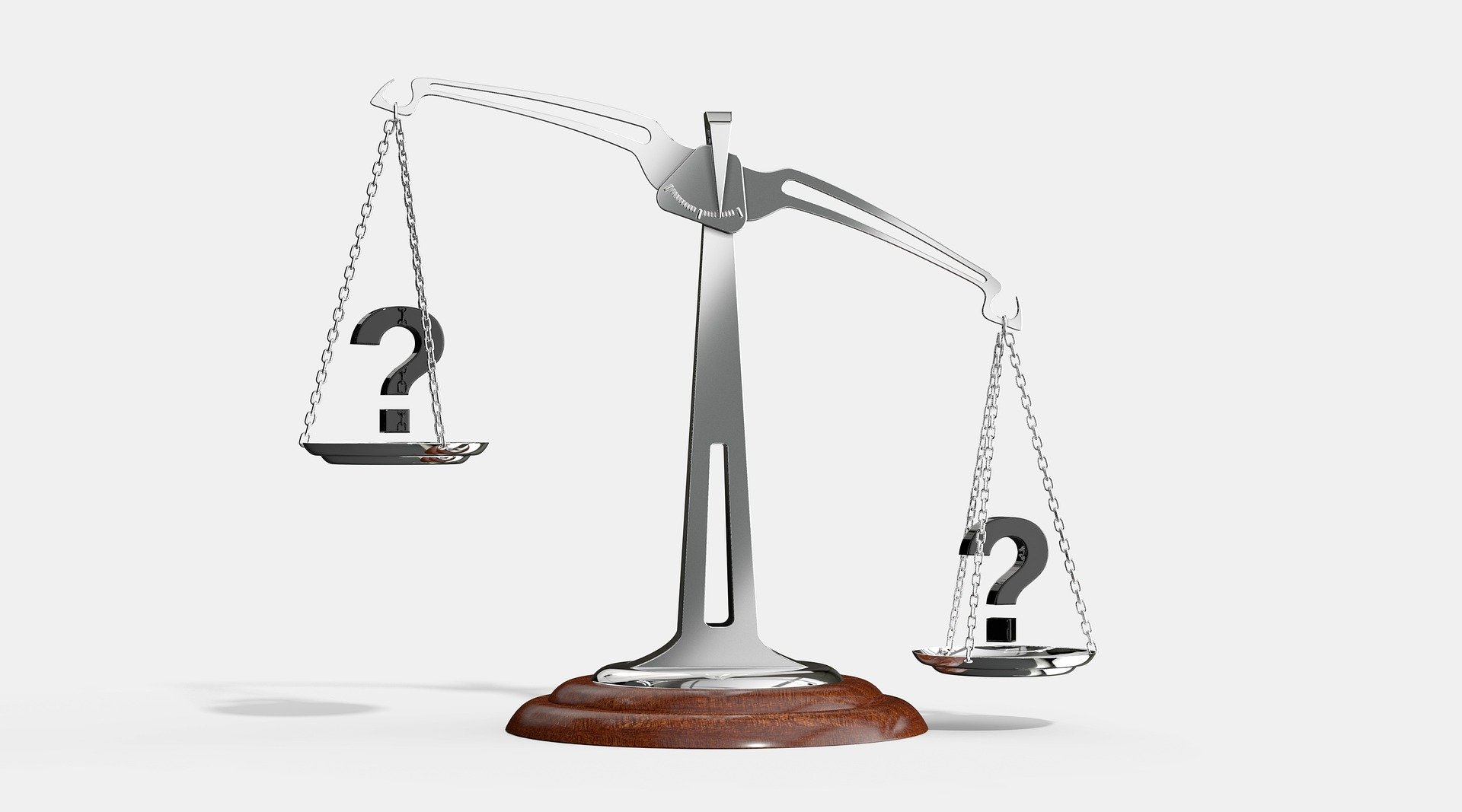Danfoss: Yammer Case Study with Q&A
EMEA | Yammer & Viva Engage Festival 2022
Join Jorn Nurkka and Hanne Schou in learning how it can take a village to build a successful Yammer network! Communities aren't born successful. It takes careful nurturing. When successful there is not a single person who answers all questions, but participation is distributed.
-
It's fine for us to hear from an award winner and his esteemed colleague. So I would like to invite Jørn and Hanne from Danfoss to jump up on the stage and share your screen if you have slides to speak to and take us on a journey. So Jørn, Hanne, over to you.
Yes. It's trying to load. I hope it's there now so you can see it.
So thank you for inviting us. So we will share our story about our smart worker community that we have created in Danfoss. It's actually one of the first communities that we created.
But before we talk about what we are also here for, you know, we have to do the slides about our small company. I don't know if you all know us, but what we say, the engineering solutions that enable the world to do more with less. We engineer tomorrow and this is normal corporate stuff.
But we have three big areas where we do. So we have like our power solutions. This is where we create built-in hoops.
Now my screen went black. Can you still see something? You? No. We see you.
Yeah, but I can't see my screen anymore. No, it went. We actually, you know, just know we've had some issues with using the PowerPoint live.
If you want to try and share your screen. Yes, give me a second. I will just do that.
Give me a second. Just need to see where I have my. There was a question from one person in the chat also about this, why we weren't using PowerPoint live.
But as I said, we have had this issue, this exact issue happening. Yes. Give me a second.
I will see if it works now. Share screen and can you see it now? Cool. Then I can't see the screen.
Doesn't really matter. So I will just move on. So we're here and then just quickly about our own company.
So we have the power solutions business. This is where we create the mobile hydraulics for a different kind of machinery for tractors and whatever. So most of our stuff, you never see it because it's built into other companies stuff.
So we are mostly business to business. In the middle, we have our climate solutions business. This is maybe the only place where you will see one of our products in real life.
If you live somewhere where it's getting cold, because then you will know that Danfoss thermostats, that's what can help you keep warm in your houses. But besides that, we do all kinds of stuff for cooling and district heating and air conditioning. And then what we also do now is that, you know, if you cool your stuff in the supermarkets, when you cool stuff, it creates a lot of heat.
So we're really reusing this heat to warm up the surrounding areas like the housings. So we've filtered that into the district heating. So that's a win-win for the supermarkets and actually they can earn money on doing that.
So cooling your milk can actually put extra money into your business. The last business we have, that's our Danfoss Drive. That's where we create a lot of conveyor belts and stuff like that.
But we also make sure that if you go into an elevator and it stops, that it makes a soft stop. I guess we all like to have a soft stop and not a hard landing when we go into the elevator. So that is really, really fast what we are doing.
Then a bit more about our company. So we are 42,000 people. We are more than 100 countries, 95 factories.
We have private health and we are located on the countryside, actually on a small island in Denmark called Nordborg. So if you drive towards our headquarter, there are a lot of fields and suddenly there are some big buildings out there. So that is really, really fast about us.
So I will hand over to my colleague, Hanne now. Thank you. And if we are looking back at our smart worker story, it actually took an offset back pre-Corona, way pre-Corona, where all of a sudden we saw this, or we experienced that a lot of new applications were occurring.
All of a sudden people were starting to ask questions about what is Planner? What is Forms? What can I do in Forms? Why can't Forms do this? Why can't we do that? So all these new features and new ways of working was being introduced. And almost constantly that was the feeling from our colleagues and they started to ask questions. And they came to us because we were part of a digital employee experience team.
But really what they experienced was, I know I'm surrounded by a lot of knowledgeable colleagues that might be able to help me, but I don't have a place where I can connect with them. So our offset was we started our first community. At that point in time, we called it Office 365.
This is now called smart worker because that is really what we wanted to create. Colleagues becoming smart workers, really trying to engage with those early adapters or everyday users of Microsoft applications. And basically also from a business point of view to make the best use of the licenses that was already paid for.
No need to go and grab a new tool or pay a new license if the suite of Office 365 at that point in time already had some functionalities that could be utilized. The way we kicked it all off was with a 21 day of Office 365 campaign, launching different everyday tasks that people could solve on how to have smarter meetings, how to share information instead of duplicate information. And we knew this was really something that would take some power.
So we teamed up with our colleagues from IT, from HR, from communications, and not least from our global service organization that also has a humongous big network in the organization. And if you move one slide forward, then really what we agreed upon was that we needed to have a clear purpose for our community. And stick to that and keep on repeating what is the purpose of this community.
And with all communication, you have to repeat it over and over again. And by the time you are a little bit tired of saying it, maybe people will start to listen and then you have traction on your subject. So it's really stick to the information.
And we made it, of course, also visible in the community itself. And another important thing, we decided never ever to launch any community without some predefined posts, already have some content available in there, because that gives, first of all, a good impression. And it also inspires participation and make a promise to the visitors that maybe it's worth coming back.
I actually have some information to engage with. It's just like if you walk into a shop, that could be Mark and Spencer, there's nothing on the shelf. You would never come back again.
So that's the terminology we use to tell our colleagues that you need to make sure you have stuff on your shelf. Otherwise, no, they will not come back. Yeah.
If you go one bit further, we also realized that a community is never born successful. It takes quite an effort to build it, nurture it and maintaining the information or the value of it. And again, we made very, very good use of the network that we had, reaching out to our colleagues, asking them, could you maybe share a question on this? Could you help us post this? And that's totally okay.
Instead of having the same person posting everything, asking questions and answering themselves, it really doesn't make sense. Then rather, really engage with colleagues around you, make them show what the community can be used for, sharing their own experiences, pitching questions, pitching whatever has happened. And now we leaned on the Microsoft technology and Microsoft is very good at communicating.
Maybe for some people, it feels like over communicating. So we chose bits and pieces and shared it with colleagues. And we deliberately decided also to share some light, easy posts on stuff that you can do immediately and some more heavy subjects.
And that was also to bridge between, we have users that are really engineers and really want to nerd into things. And we have also users that sit with an obvious everyday problem that we will help them solve. So, okay, I wonder if you are the man to actually show this smart work.
What is it like? I don't know. So I have to stop sharing and then share again because I have to share another screen. Just give me a second.
And then I just need to find out where I have that screen. So I'll just do it like this. And now you will probably be able to, I hope you can see my screen now and you can see Hanne in the corner.
I will move Hanne. Sorry for that, Hanne. No, it's okay.
So now I can't see what you're doing because of sharing my screen. So this is our smart worker community and we have asked people that we are allowed to share their names here. So we will not be in violations of any GDPR stuff.
So this is how it looks. And what you really wanted to make sure is that we have something that really tells people what is this about. So we are part of a team.
We also call digital employee experience and we want to make work life easy. So this is our catchy picture. So it's really important that you have something that really, if people come in here, they know what it's about.
Then we have the name of the community called smart worker, get to know the digital tools. So already there, people know what all this is about. And then of course on the side here, you can see an info about, so what can you expect to find in here? What's all about? So this is really also important.
So when people come in here, as Anna said, they know what it's all about. So we will not get disappointed and they will come back because they can see we have a lot of good stuff on the shelves in here. And of course we can also link to all kinds of stuff as you know that.
Here we have a post because we are creating a new internet. So we just wanted to share with our first adopters here that we are doing that so they can go in and do it. And here you can see, here's just a question from Greg who wanted to do something about forms.
So she asked a question, I answered, but as you can see also down here, there were also other people answering. And this is the really, really cool thing about this community. When we started out, of course, it was more like the core team who did all the stuff.
But now we really see that everyone is pitching in, answering questions, sharing tips and tricks and all of that. So it's really a community that has taken off by itself. And we see even, I just checked that, was it in February last year or this year, we had 500 members.
Now we are 588. And when I did the screen cut for the presentation yesterday, we were 1580. So we got eight new members since yesterday.
So it's still growing. So it's really, really cool. And we see a lot of people coming in here, liking, taking part of discussion, asking questions, do all kinds of stuff.
So it's really a great thing that we have here and we really see how it works. But it's not only this community because we have done a lot of apps onto it. So now I have to change my screen again.
Sorry for that. That's a bit of changing back and forth here. So back to the presentation.
I hope you can see it now. Good. Then you already seen that.
And here you can see it's the 1580 people we have in it. Now we have more of those. It's really cool.
So at the same time, maybe I have to say that we launched Yammer in April this year. Roughly a year ago, we started the piloting. So it's still new for our company, but it has really taken off.
And when we went live, we created this page where we shared a lot of information about communities, tips and tricks, how to create it, how to get help to move from one community to another and user guide governance and all that. So a lot of information around how you really want communities. Beside that, to support our journey, we also have some smart worker champions that is part of this community also, but they also supposed to help their colleagues out in the big world because we are a global company and we cannot be everywhere due to time zone difference and stuff like that.
So we have a group of people in here that helps us, but I also have to admit, lately, we have not done so much in our smart worker champions, but we have a plan off that we need to get going there and do some more because it's really a great pool of colleagues we have there who have a passion for, maybe could be for power apps, then they can help people with that or just in general. So it's really important you find these guys that have the passion for this and get them into your community and have them to help you run this that really, really works well. Then, of course, we also have to help our community owners.
We have a community owner forum where all those who run a community can be part of and they can share experience on how. So how do I run my community? How do I get more members? I tried this, it doesn't work, and I'll try this, how can it be? So this is where they can share all their knowledge and input also from the smart worker community so that they can get better community owners and stuff like that. Another thing that we launched together with this was actually something that we call Get to Know.
I know there are some colleagues from Danfoss on here. I'm sure they know what it is. So it's a team's meeting or we call it a live show.
Don't take the word for more than what it is. So there was one host, one expert. We did a bit like a talk show.
So there was talk and there was visual demo and stuff like that. And you could ask questions in the chat. And it was actually known as the Timo and Nourka show.
And I know my former partner in crime, Timo, he is listening now, or at least he was earlier, until he moved to the dark side, to the consultant side. But he's still out there, Timo. Great working with you at those times.
Now I have different colleagues that we do it once in a while. But we had between 50 and 500 people participating in this session. Could be that we shared what's new about Teams, what about Power Apps, what about this or the specific questions or forms.
So that enriched our community with, oh, now we put it on live. So here you can ask the questions. And then we always ask them, so what would you like us to look into the next time we meet? And then people could come up with suggestions and then we did it.
So that was really a great add-on to the community. And we got a lot of positive feedback. Of course, we put our forms on, utilized all the Microsoft tools, and then we got the feedback.
And then we prepared for the next one. So that's a good idea of a way how you can do it going forward. Put on these extra channels that can enrich your stuff, if you're doing that.
It worked well here when we had this about using the tools, put it live and give the people a way of asking questions live. Time, we have a bit of time. Let me get, so, oh, yeah.
So just to sum a bit up what the learnings we have done when we do communities internal. And this slide is also on the community page that you saw before. So it's really important yet to define the purpose of your community as Hanne said, so that people know what is it all about? Should I come back? Should I stay away? Is it for me or not? So this is really, really important.
And then of course, find your community owners, find those guys who want to help you run this that has a really, really passion for this. Otherwise it will not fly. You need to have the people in here that will help you.
And of course, as I said, decide on the layout for your community, have a catchy picture or a good name, a saying name, or make sure you have all the info about on the site, what it's all about. Again, it's up, you are competing with other communities in your area. So you need to stand out, tell people, what do I get when I get in here? So that's really, really, really important.
And then it doesn't come by itself as we also said. So make sure that you plan the first month of engagement. So do a simple communication plan.
We will post this, we will post this, you post this, I do this or whatever. Because again, there needs to be something going on. Otherwise it will not catch the attention of your colleagues.
So please make sure that you do that and get that. And of course you need to figure out, so how is it that I want to run my community? So we did all these add-ons with the Tego and Nuoka shows or whatever, do we want to have community owners forum or whatever? So it's the whole package. It doesn't come by itself.
It's not a five kilometer run. It's a half marathon, maybe sometimes even a full marathon. I think actually we look back, I think we started out in 19, in another, it was Chatter we used when we started.
And it was called Office 365. Luckily it was also a success at this time, but it takes time to get it up and running and you have to be patient. Don't give up, keep up the flag.
And remember, you just have to do all these basic stuff and do it over and over again. One last slide, Hanne. Yep.
And it actually rings very well. One of the questions that appeared in the chat here said, so how do you rely on people getting to know? Well, we need to keep promoting it. We need to continue the good work and keep promoting the community itself.
We are a growing company. We just had, last year we invited 10,000 new employees when we bought a add-on to the company. We are still buying new companies.
And of course we need to keep promoting it. And then we also rely on our smart worker community, the smart workers to actually spread the word and tell people that they sit next to that to convey, hey, I learned this, did you know? And actually the smart worker community was where I got the information from. So keep on promoting it towards all our employees.
And then look at, can we actually, are there some subjects that would benefit from having its own community? Like for instance, Power BI, it's really dedication it takes to learn Power BI. For some employees, they started their own community, super fine. Maybe Power Apps or Power Automate would be the next dedicated area where people can really explore the options available here.
And I think, yeah, of course the great live shows, meetings next to it, we will still continue to do. So with that said, I think we will thank you for your time and hope you enjoyed it. Thank you.
Thank you so much, Hanne and Jørn, for sharing your experience. And again, once again, the beauty of the Yammer Festival is lots of great ideas for people to steal. So yeah, really, really good tips and advice there.
We do have a few minutes now for a couple of questions. I'd like to pick some out from the Q&A. There's one from Ernst asking, how many of you are managing the community at Danfoss? Is it full-time or part-time, people from the Digital Employee Experience team? How do you resource this management? Well, it's all on voluntary basis.
So it's just, well, I look there normally once a day, or more a day, and some of my colleagues do it. When they have time, and there's something really specific that I know, okay, that's about Power Apps, I have no clue. Then maybe I mention a colleague that I know, that knows about it, stuff like that.
So it's not that I have from 8 to 12, and you have from 12. So it's all voluntary basis. We just go through and look into it.
Hopefully people will not have to wait too long with answers. Because sometimes it can take maybe a little bit longer if there's really nerdy questions that we need to find someone who knows something about. Yeah.
But I guess it's this thing of the power of the network, right? So there was another question from Cai, actually, our CEO. What did you do in the beginning to get new people to contribute to the community? I know, Hanne, you mentioned something that is always really important for me, is actually reaching out offline and connecting people. So maybe that was one of the tactics.
Yeah, it was. Hanne, you can take that one. Yeah.
Luckily, we were a couple of people that got together that also have quite a long history within the company. So we maybe have done a favor here and there for people throughout the organization, and we started to cash in on those favors. Really just reaching out and said, hey, maybe you don't even know the answer yourself, but then I will definitely answer.
Because now we want to show also the diversity of different things. And that actually paid off. In a matter of months or so, people really started to pitch in themselves.
And now we see really people starting to answer without people that we didn't know was a part of the organization. And now they're surfacing and really taking the ownership. And yeah.
I guess it's also because I can see it's not dangerous to speak up. Just go out there and do your best and answer. You don't need to be an official expert.
Because there are many experts out there who do not have the title on them that they know, but they're just from interest. They know about it. That's a fantastic point there.
And when you think of business value from a Yammer network and why it's worth having the social side of things as well, it's exactly this. It creates that safe space for the knowledge to surface and the expertise to surface. So that's fascinating to hear.
And the funny thing is, actually, we have also an IT service desk, sometimes to refer people to our community to get help. So that's a sum up for our community. Yeah.


